Art Lovers discussion
Art History
>
Art Trivia of the Day (2011: January through March)
message 1:
by
Carol
(new)
Jan 01, 2011 11:15AM
 Happy New Year!
Happy New Year!
reply
|
flag
 Happy birthday to Alfred Stieglitz born on January 1, 1864 in Hoboken, New Jersey.
Happy birthday to Alfred Stieglitz born on January 1, 1864 in Hoboken, New Jersey.[image error]
Stieglitz’s parents, German-Jewish immigrants, played an active role in their children’s education. His father, a former lieutenant, purchased an exemption from future fighting in the Union Army to be able to manage in his son’s studies. In 1881 his father sold his business and moved the family (6 children) back to Europe to further Alfred’s education. Stieglitz began studying mechanical engineering in Berlin. He enrolled in a chemistry class taught by Hermann Wilhelm Vogel, who was an important scientist and researcher in the then developing field of photography. In Vogel, Stieglitz found both the academic challenge he needed and an outlet for his growing artistic and cultural interests. He also met German artists Adolf von Menzel and Wilhelm Hasemann, both of whom introduced him to the idea of making art directly from nature. He bought his first camera and traveled through the European countryside, taking many photographs of landscapes and peasants in Germany, Italy and the Netherlands.
In 1884 his parents returned to America, but Stieglitz remained in Germany for the rest of the decade. During this time Stieglitz began to collect the first books of what would become a very large library on photography and photographers in Europe and the U.S. He read extensively as he collected, and through his library he formulated his initial thinking about photography and aesthetics. In 1887 he wrote his very first article, "A Word or Two about Amateur Photography in Germany", for the new magazine The Amateur Photographer. Soon he was regularly writing articles on the technical and aesthetic aspects of photography for magazines in England and Germany. That same year he submitted several photographs to the annual holiday competition held by the British magazine Amateur Photographer. His photograph The Last Joke, Bellagio won first place – Stieglitz's first photographic recognition. The next year he won both first and second prizes in the same competition, and his reputation began to spread as several German and British photographic magazines began publishing his work.
[image error]
In 1890 his sister Flora died during childbirth, and his parents called all of their family home to deal with the tragedy. At first Stieglitz did not want to come back, but when his father threatened to cut off his allowance he reluctantly returned to New York. In 1890, he made the first successful photographs in snow, in rain, and at night.
[image error]
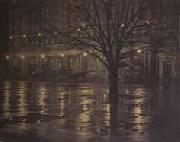
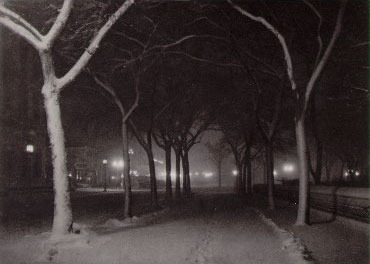
In 1902 he founded the Photo-Secession group to establish photography as an art. His own best photographs are perhaps two series (1917–27), one of portraits of his wife, Georgia O'Keeffe, and the other of cloud shapes corresponding to emotional experiences. His photographs were the first to be exhibited in major U.S. museums.
[image error]
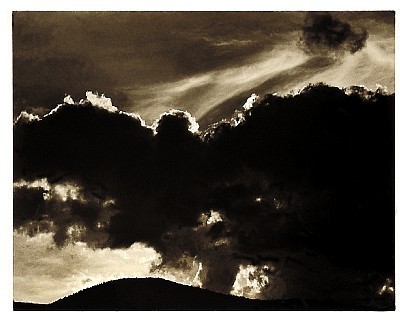
[image error]
He also was the first to exhibit, at his "291" gallery in New York City, works of modern European and U.S. painters, five years before the Armory Show.
[image error]
"The Street--Design for a Poster," from Camera Work (1903)

Stieglitz, Gossip—Katwyk, 1894 (published in Camera Work 1905) half-tone reproduction, approximately 5 x 8.”

In the US, Stieglitz continued to photograph, using the newly invented hand camera and surprising his contemporaries with such a technical tour de force as "Winter on Fifth Avenue," taken in 1893 during a blizzard. He organized competitions and exhibitions in camera clubs and from 1890 to 1895 was in the photoengraving business. He was editor of the American Amateur Photographer (1893-1896), Camera Notes (1897-1902), which was the official organ of the Camera Club of New York, and Camera Works (1902-1917).

Winter on Fifth Avenue
When the National Arts Club of New York invited Stieglitz to hold an exhibition in 1902, he showed the work of those American photographers in whom he believed. He described the exhibition as the work of the Photo-Secession. Thus an informal society was formed that dominated art photography in America for 15 years. His chief colleague was a young photographer and painter, Edward Steichen, who assisted him in the society's Little Galleries, which came to be known as "291" from the Fifth Avenue address.

291 Gallery featuring the 1915 Picasso-Braque exhibit, National Gallery of Art
In 1907 Stieglitz began to show works of art other than photography at "291." In 1908 he exhibited drawings by the sculptor Auguste Rodin and drawings, lithographs, etchings, and watercolors by Henri Matisse - the first American exhibition of this modern artist. "291" became the most progressive art gallery in the country, showing the work of Pablo Picasso, Constantin Brancusi, Henri de Toulouse-Lautrec, and young Americans such as John Marin.
In 1910 Stieglitz organized a vast exhibition of pictorial photography in Buffalo, N.Y. He helped the Association of American Painters and Sculptors to organize the "International Exhibition of Modern Art" in 1913. During the exhibition he showed his own photographs at "291" as a demonstration of the esthetic differences between photography and other visual media.
The "Photo Secession" disbanded in 1917, "291" closed, and Camera Work ceased publication, but Stieglitz continued to photograph and exhibit. He made penetrating portraits of his friends and associates. In answer to a challenge that his photographs' power was due to his hypnotic influence over his sitters, Stieglitz began to photograph clouds, to show, as he wrote in 1923, "that my photographs were not due to subject matter." He called these photographs "Equivalents," and they almost rivaled abstract art in their beauty of form and chiaroscuro.

Music - A Sequence of Ten Cloud Photographs, No. I. Clouds in 10 Movements, No. I, 1922. Gelatin silver print, MoMA
In 1924 Stieglitz married Georgia O'Keeffe, with whom he had shared spiritual and intellectual companionship since 1916. In 1929 Stieglitz opened An American Place, a gallery where he showed paintings by contemporary Americans and, later, photographs. From the windows of this 17th-floor gallery and from his apartment he photographed New York City. During the thirties, Stieglitz photographed less, stopping altogether in 1937 due to failing health. He died in NYC on July 13, 1946.
Famous work--

The Steerage, 1915, Photogravure
The Steerage is a photograph taken by Alfred Stieglitz in 1907. It has been hailed as one of the greatest photographs of all time because it captures in a single image both a formative document of its time and one of the first works of artistic modernism.
In June 1907 Stieglitz and his family sailed to Europe to visit relatives and friends. They booked passage on the SS Kaiser Wilhelm II, one of the largest and fastest ships in the world at that time. Stieglitz's wife Emmy insisted on first class accommodations, and the family had a fine stateroom on the upper decks. According to Stieglitz, after their third day of travel he went for a walk around the ship and came upon a viewpoint that looked down toward the lower class passenger’s area, known on most ships as the steerage. It is likely the photo was taken while the ship was anchored at Plymouth, England.
Stieglitz described what he saw when he took it: "There were men and women and children on the lower deck of the steerage. There was a narrow stairway leading to the upper deck of the steerage, a small deck right on the bow of the steamer. To the left was an inclining funnel and from the upper steerage deck there was fastened a gangway bridge that was glistening in its freshly painted state. It was rather long, white, and during the trip remained untouched by anyone. On the upper deck, looking over the railing, there was a young man with a straw hat. The shape of the hat was round. He was watching the men and women and children on the lower steerage deck…A round straw hat, the funnel leaning left, the stairway leaning right, the white drawbridge with its railing made of circular chains – white suspenders crossing on the back of a man in the steerage below, round shapes of iron machinery, a mast cutting into the sky, making a triangular shape…I saw shapes related to each other. I saw a picture of shapes and underlying that the feeling I had about life."
He did not have his camera with him, and he raced back to his cabin to get it. At that time he was using a hand-held 4x5 Auto-Graflex that used glass plate negatives. Stieglitz found he had only one glass plate prepared at the time, and he quickly returned to the viewpoint and captured the one and only picture of the scene. He was not able to develop the plate until he arrived in Paris nearly a week later. He reported we went to the Eastman Kodak Company in Paris to use their darkroom but was referred to a local photographer instead. He went to the photographer's home and developed the plate there. The name of the photographer who lent his facility is unknown. Stieglitz kept the developed in its original plate holder to protect it until he returned to New York several weeks later.
Stieglitz later said he immediately recognized this image as "another milestone in photography…a step in my own evolution, a spontaneous discovery", but this claim is challenged by several of his biographers who have pointed out that although he had many opportunities to do so he didn't publish it until 1911 and didn't exhibit it until 1913.
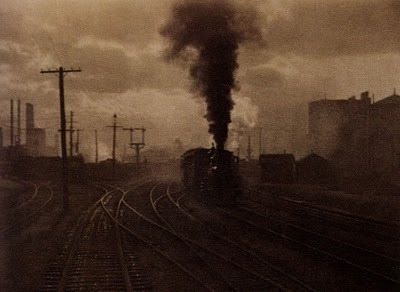
Hand of man, 1902
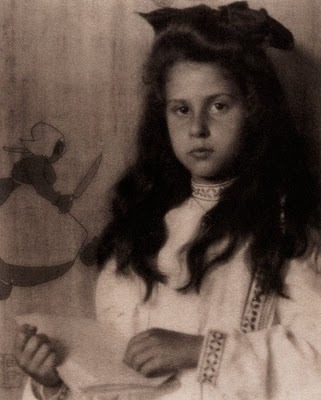
Katharine Stieglitz, 1905

Georgia O’Keeffe, 1918
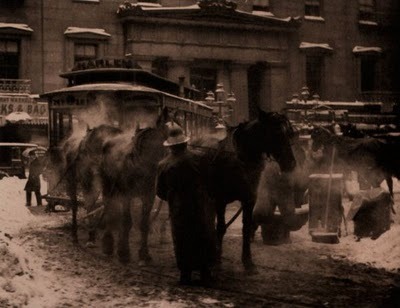
The Terminal, 1893
[image error]
Stieglitz and O’Keeffe and her automobile at Lake George, undated
 Happy birthday to Bartolome Esteban Murillo on January 1, 1618.
Happy birthday to Bartolome Esteban Murillo on January 1, 1618.[image error]
self portrait, probably around 1670
The most popular Baroque religious painter of 17th-century Spain, he is noted for his idealized figures, most of them painted for religious orders and the confraternities of his native Sevilla (Seville).
Today, Bartolomé Esteban Murillo is best known as the painter of sweetness and light. His demure, rosy-cheeked Virgins and mischievous, smirking street urchins have often caused the painter to be dismissed as sentimental, weak and inconsequential, unlike his far darker, more serious contemporaries, Ribera, Zurbarán and Velázquez. Due to this less than flattering interpretation of his paintings, until recently Murillo had virtually disappeared from the art history books.
This disappearing act is all the more incredible given that in the 17th and 18th centuries, Murillo was one of the most famous artists in all of Europe, far more famous even than Velázquez. Murillo's paintings were considered the triumph of the Spanish Baroque.
Although today Velázquez is cherished as the genius of the 17th century, in his own time Murillo's paintings were far more widely known outside of Spain, and were considered so valuable that at one point the king actually forbade their export. The sweetness and easy accessibility of Murillo's style was a welcome relief from the darkness and grave sobriety of artists like Zurbarán, and the inoffensive piety of Murillo's paintings made them perfectly suited for Counter-Reformation tastes. The artist was a pious, deeply religious man, and almost the totality of Murillo's oeuvre is religious in nature.

Christ healing the Paralytic at the Pool of Bethesda, 1667-70, National Gallery, London
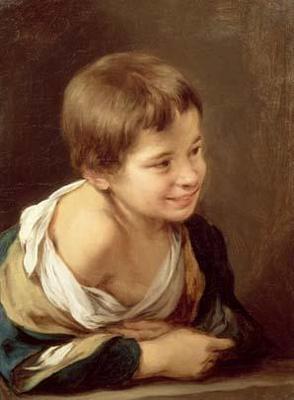
A Peasant Boy leaning on a Sill, 1670-80, National Gallery, London
[image error]
Christ the Good Shepherd
[image error]
Assumption of the Virgin, 1680
[image error]
The flower girl,
[image error]
The little fruit seller, 1675
[image error]
The Prodigal Son Returns
"It is almost certain that he compensated for the sadness of his family life by painting a world fashioned in this dreams, inhabited by cherubs playing on a sea of clouds, saints in mystical transport, or the smiling, laughing children of Seville."
The quote above I found in a library book (published by the Prado Museum and Royal Academy of Art, London c. 1982) on him:
http://www.goodreads.com/book/show/98...
Such a talented man who had such a sad, lonely life. When he was 9 years old, both parents died within 6 months of each other; he went to live with an older sister; at 15 yrs he started training as a painter with a relative.
At 27 married and began his first major work (series of paintings for the cloister of a monastery off San Francisco). He and his wife had 9 children -- but only 4 were still alive when his wife died 20 years later. He remained a widower until his death. His only daughter, Francisca, lived in a Dominican convent of the Madre de Dios and took the name of Sor Francisa de Santa Rosa after the first saint of the America. Murillo often painted this saint perhaps in honor of his daughter. Only Gaspar (his youngest son age 20) was with Murillo at the time of his death. He died with his brushes in his hand. He was working on a high altarpiece and fell from the scaffolding in the Capuchin Church at Cadiz.
The book also has beautiful drawings which I could not find online.
 Happy birthday to Ernst Barlach on January 2, 1870.
Happy birthday to Ernst Barlach on January 2, 1870.[image error]
German expressionist sculptor, graphic artist/printmaker, and writer. After studying in Hamburg, Dresden, and Paris, he became the outstanding sculptor of the Expressionist movement, achieving a rough-hewn quality by preferring wood, the material used in late Gothic sculpture. Even when he worked with other, more contemporary materials, he often emulated the raw quality of wood sculpture to achieve a more brutal effect. He achieved fame in the 1920s and '30s with the execution of several war memorials for the Weimar Republic. Barlach also wrote Expressionist plays, which he illustrated with woodcuts and lithographs. His studio at Güstrow was opened posthumously as a museum. He died on October 24, 1938.
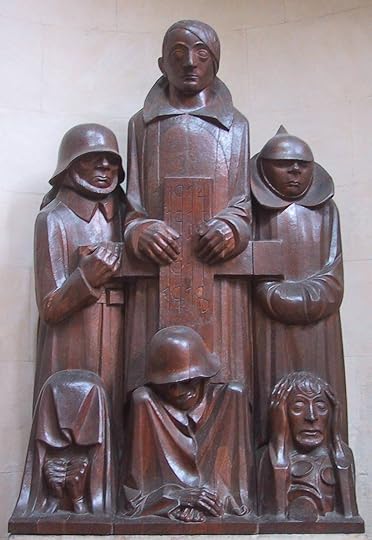

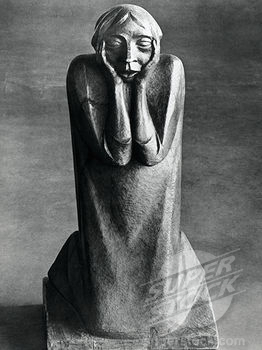
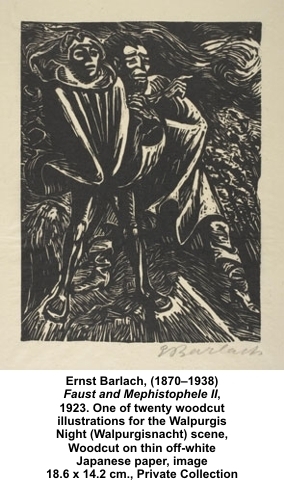
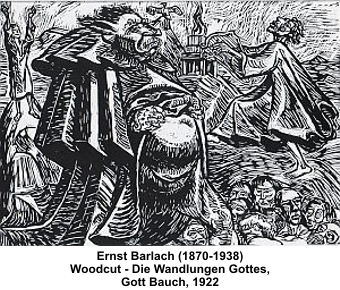
[image error]
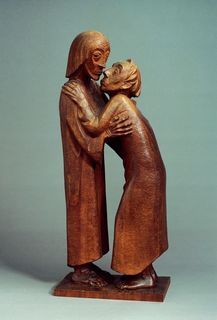
reunion Christ and Thomas
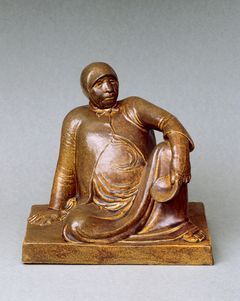
Russian beggar with bowl
more images –
http://www.life.com/image/50345409
http://www.google.com/imgres?imgurl=h...
 Happy birthday to Marsden Hartley born on Jan. 4, 1877 in Lewiston, Maine.
Happy birthday to Marsden Hartley born on Jan. 4, 1877 in Lewiston, Maine.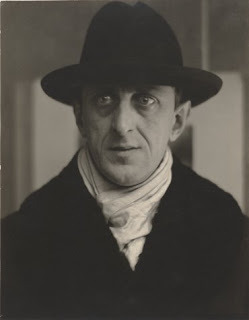
After attending the Cleveland School of Art, he settled in New York City but also lived sporadically in France and Germany. From 1900 he spent most summers in his native Maine, painting landscapes. He first exhibited them at Alfred Stieglitz's "291" gallery in 1909. In 1913 he exhibited with Der Blaue Reiter in Berlin and at the Armory Show. His early style of abstract painting with strongly outlined forms and brilliant colors evolved into a personal interpretation of Expressionism, most evident in his bold and brooding Maine landscapes. He produced a dramatic series of pastels and oil paintings of New Mexico (1918 – 20) and in 1932 a notable series of the volcano Popocatépetl in Mexico.
[image error]
Portrait of a German Officer 1914
Marsden Hartley painted his most startlingly advanced abstractions during the first years of World War I (March 1914–December 1915) while he was living in Berlin. The city was filled with avant-garde artists from all over the world. During this period he produced a series of abstract portraits of German officers, intensely powerful canvases that reflect not only his revulsion at the horrors of war but also his fascination with the energy and pageantry that accompanied the war's destruction.
This painting, executed in November 1914, shows Hartley's assimilation of both Cubism (the collage-like juxtapositions of visual fragments) and German Expressionism (the coarse brushwork and dramatic use of bright colors and black). In 1916 the artist denied that the objects in the painting had any special meaning (perhaps as a defensive measure to ward off any attacks provoked by the intense anti-German sentiment in America at the time). However, his purposeful inclusion of medals, banners, military insignia, the Iron Cross, and the German imperial flag does evoke a specific sense of Germany during World War I as well as a collective psychological and physical portrait of a particular officer.
The picture shows pointed references to Hartley's close friend Karl von Freyburg, a young cavalry officer who had recently been killed in action, including his initials, his age (24), and his regiment number (4). Hartley's concern with abstraction did not last long (ca. 1911–16). He made several more trips to Europe and spent time in Mexico, the American Southwest, Bermuda, and Nova Scotia before returning home to Maine. His later work, depicting the hard-working people and majestic landscape of the state, is simple, direct, and intensely personal.
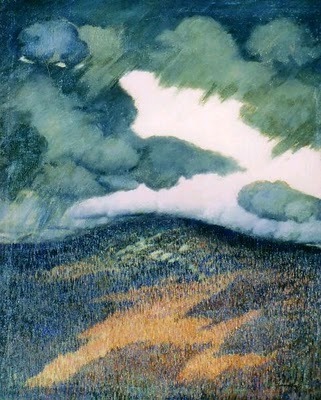
Stormy Clouds, 1906
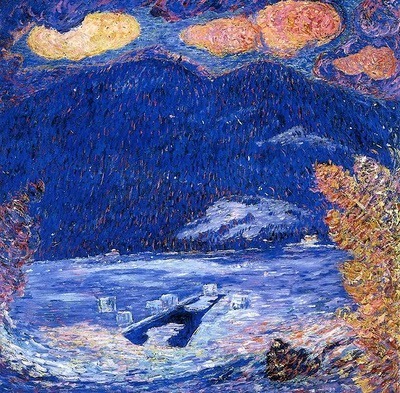
The Ice Hole, 1908

Musical Theme (Oriental Symphony)," 1913, il on canvas, Rose Art Museum, Brandeis University, Waltham, Mass.
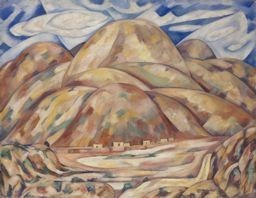
Landscape No. 3, Cash Entry Mines, New Mexico, 1920, Oil on canvas, The Art Institute of Chicago
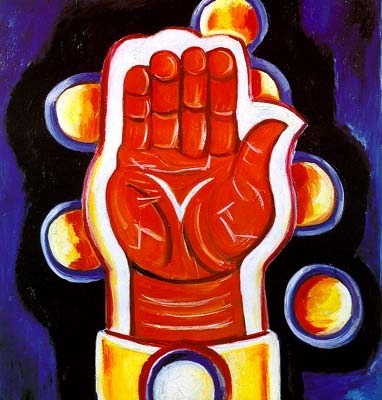
Morgenrot, 1932
[image error]
Popocatepetl, Spirited Morning—Mexico, 1932, Smithsonian American Art Museum

Birds of the Bagaduce, 1939 Oil on board, 28 X 22"

Sustained Comedy, 1939
[image error]
Christ Held by Half-Naked Men, 1940

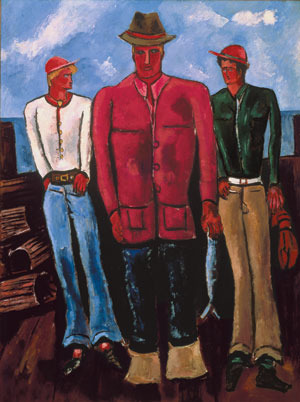
 Happy birthday to Albert Bierstadt born on Jan. 7, 1830 near Düsseldorf, Westphalia.
Happy birthday to Albert Bierstadt born on Jan. 7, 1830 near Düsseldorf, Westphalia.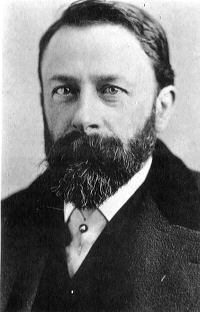
This German-born U.S. painter with his parents immigrated to the U.S. when he was just an infant. As a young man he traveled and sketched throughout Europe before returning to the U.S. to join a westward-bound expedition in 1859. Specializing in grandiose pictures of vast mountain scenery, he achieved great popularity in his lifetime with panoramic and often fanciful scenes of the American West, including The Rocky Mountains (1863) and Mount Corcoran (c. 1875 – 77). His huge paintings were actually executed in his New York City studio. Bierstadt was part of the Hudson River School, not an institution but rather an informal group of like-minded painters. The Hudson River School style involved carefully detailed paintings with romantic, almost glowing lighting, sometimes called luminism.
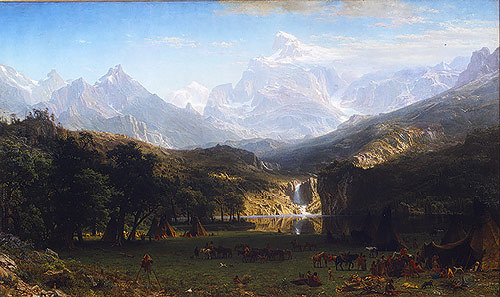
The Rocky Mountains, Lander's Peak, 1863, Oil on canvas, The Metropolitan Museum of Art
This painting is the major work that resulted from the artist's first trip to the West. In spring 1859, he accompanied a government survey expedition, headed by Colonel Frederick W. Lander, to the Nebraska Territory. By summer, the party had reached the Wind River Range of the Rocky Mountains in what is now Wyoming. Bierstadt dubbed the central mountain in the picture Lander's Peak following the colonel's death in the Civil War. This was one of a number of large works painted after Bierstadt's return from these travels. It was completed in 1863, exhibited to great acclaim, and purchased in 1865 for the then-astounding sum of $25,000 by James McHenry, an American living in London. Bierstadt later bought it back and gave or sold it to his brother Edward.
[image error]
Mount Corcoran (c. 1875 – 77), oil on canvas, Corcoran Gallery of Art
[image error]
The Oregon Trail, 1869, Oil on canvas
[image error]
Among the Sierra Nevada, California
[image error]
Emerald Sea, 1878
[image error]
Mount Rainer
http://www.albertbierstadt.org/
 Happy birthday to (Jocelyn) Barbara Hepworth born on January 10, 1903
Happy birthday to (Jocelyn) Barbara Hepworth born on January 10, 1903in Wakefield, West Yorkshire, UK
[image error]
British-born sculptor Barbara Hepworth has been called one of the outstanding women artists of the twentieth century. Throughout her working life and until her death, she never received the recognition of male contemporaries such as another - and more famous - British sculptor, Henry Moore. Comparing the two, art critic Leslie Judd Portner, in "Washington Post and Times Herald", noted that "Where Moore concerns himself with natural forms, Hepworth's work is almost entirely abstract."
Hepworth was the eldest of four children. As a young girl, she often traveled about the Yorkshire countryside with her father for his work as county surveyor. She spoke of Yorkshire as a "curiously rhythmic patterning of cobbled streets … most ungracious houses dominated by … slagheaps, noise, dirt, and smell." These early impressions of the contradiction between industrial town and quiet countryside later became an integral part of her work.
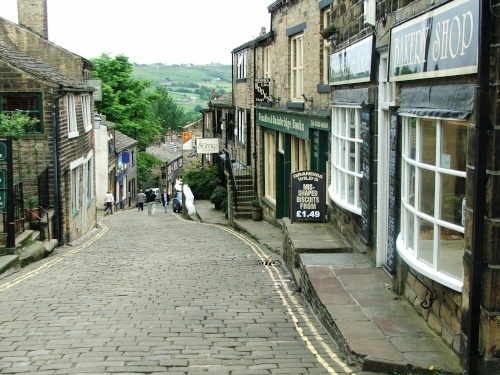
By the age of 16, Hepworth was modeling life portraits in clay, which helped to win her a scholarship to the Leeds School of Art, where she studied for a year. At Leeds, she met another young artist who would become a lifelong friend, the renowned sculptor, Henry Moore. Although Hepworth would never receive the recognition of her colleague, he was an important influence on her work.
Another scholarship gave Hepworth three years in London as a student at the Royal College of Art. In 1924, at the age of 21, her work earned her a year's study in Italy. From the art-filled city of Florence, Hepworth toured the countryside, and the sights and sounds of the Tuscany landscape became an integral part of her work, just as Yorkshire had years before. Hepworth stayed in Italy for 18 months after her scholarship ended. She studied in Rome with master carver Ardini, who taught her that "marble changes color under different people's hands." She later said she understood him to mean that the artist must learn to understand, not dominate the material.
[image error]
Besides her studies, Hepworth found time for marriage to John Rattenbury Skeaping, also a sculptor from Britain. Their only child, Paul, was born in 1929. A year earlier, the work of both Hepworth and Skeaping was exhibited at the Beaux Arts Gallery in London. Hepworth's doves in Parian marble from this exhibition are now in the Art Gallery of Manchester. She and Skeaping were divorced in 1933. That same year she married another British artist, Ben Nicholson. Under his influence, her sculpture became more severe and geometrical.
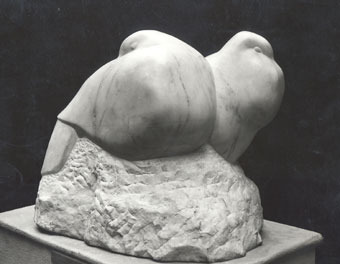
Hepworth and Nicholson traveled through France for most of the year, visiting the studios of such famous artists as Pablo Picasso and avant-garde sculptors Constantin Brancusi and Jean Arp. They joined the Abstraction-Création group in Paris. Hepworth's work from this period includes a kneeling figure in rosewood, now in the Wakefield Art Gallery.
[image error]
mother and child, 1934
Work in a New Direction -- The birth of triplets, Simon, Rachel, and Sarah, in 1934 marked a profound change both in Hepworth's life and her life's work. Always short of money in recognition of her art, she said that after the birth of the triplets, she knew fear for the first time. She and Nicholson had about $100 in the bank at the time and were living in a basement flat. Her work changed, too. Relationships in space began to absorb her creativity, and her sculpture became more formal. For some time she had been drifting away from recognizable human forms, but now her pieces became far more abstract. An example is Three Forms (1935), consisting of a sphere and two nearly oval shapes. Critics have suggested this may symbolize the birth of her triplets.
By 1935, Hepworth and Nicholson had become involved with an international artistic group that included such names as Dutch abstract artist Mondrian and German-born Walter Gropius, an influential leader in the development of modern architecture. But World War II was now approaching and Hepworth, worried about the safety of her children, moved with them to Cornwall in southwestern England. The influence of what she called the "pagan landscape" and the sea is evident in her work from this period, such as Tides (1946), with a hollowed interior that contrasts in color with the polished grain on each side. By the mid-1940s, Hepworth's sculpture had become increasingly open and hollowed out so that the interior space became as important as what surrounded it.
[image error]
Dame Barbara Hepworth, glossy, unglazed bromide print, early 1950s
Hepworth and Nicholson were divorced in 1951. For the next two decades, her work received broader recognition and honors. It was part of an exhibition in Venice, the Twenty-fifth Biennale, which she attended, sitting every day in the Piazza San Marco and watching the way people reacted to her use of space. She produced Contrapuntal Forms in blue limestone (1950) for the Festival of Britain, which stresses the opposition of vertical forms to the horizontal. For a change of pace in 1954 she designed sets for Michael Tippett's opera, Midsummer Marriage. By this time, Hepworth had started to work with metals. One of her best-known works, which now guards the United Nations Plaza in New York City, is Single Form (1963), a towering shield-like mass of bronze. She received a number of commissions in the 1960s for truly huge sculptures, most of them about 20 feet high. An example is Four-Square Walk Through (1966), a gigantic geometrical piece.
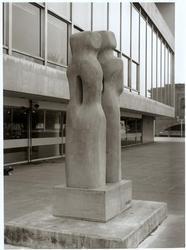
Contrapuntal Forms, 1950, blue limestone
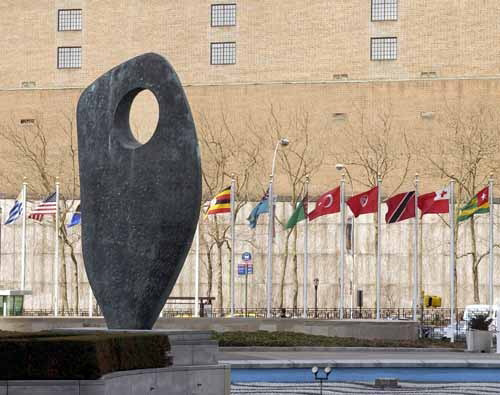
Single Form, 1963, United Nations

Four Square (Walk Through), 1966, bronze, edition of 3, cast no. 1, Norton Simon Museum
Barbara Hepworth's life and work were honored by her country in 1965 when she was made a Dame Commander of the Order of the British Empire. She died on May 20, 1975, in a tragic fire in her home at St. Ives, Cornwall. The house is now a museum and features many of her works.
[image error]
“I must always have a clear image of the form of a work before I begin. Otherwise there is no impulse to create.”
[image error]
Two Rocks, 1971, Irish black marble
“One must be entirely sensitive to the structure of the material that one is handling. One must yield to it in tiny details of execution, perhaps the handling of the surface or grain, and one must master it as a whole.”
[image error]
Discs with Strings (Moon), 1969, Aluminium with strings, edition 4 of 9, height 18 inches
[image error]
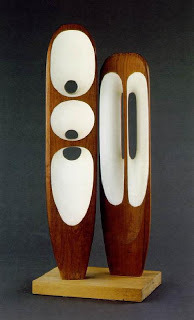
[image error]
Spring, 1966, bronze. Tate Modern

Wave, 1943-44, wood, paint, string, National Galleries of Scotland
'Wave' was inspired by the landscape of Cornwall, where Hepworth lived at the time. The piece epitomises the kind of sculpture the artist was producing towards the end of the Second World War. The artist has combined organic form with natural materials and the use of string. The Russian Constructivist sculptor, Naum Gabo used nylon thread in his sculpture from around 1938 and Hepworth, who knew him well, may have been influenced by this, as well as by mathematical models. The string emphasizes the tension between the interior and exterior of the work. This tension is further highlighted by the contrast between the polished wood and matt, painted interior.

Two Forms

Figure

Blolith
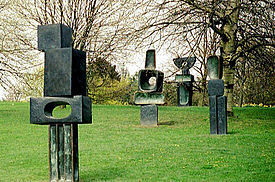
Family of Man, 1970, bronze, Yorkshire Sculpture Park

Sculpture Construction Crucifixion Homage to Mondrian, outside Winchester Cathedral
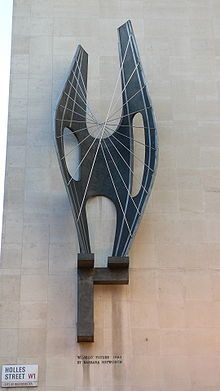
Winged Figure, 1963, Oxford Street, London

Photo of Dame Barbara Hepworth
books on her –
http://www.goodreads.com/book/show/89...
http://www.goodreads.com/book/show/17...
book written by her –
http://www.goodreads.com/book/show/80...
 Happy 'late' Birthday to Girolamo Francesco Maria Mazzola “Parmigianino” !
Happy 'late' Birthday to Girolamo Francesco Maria Mazzola “Parmigianino” !“Le Parmesan”, not Mazzola Italian Mannerist painter, draftsman, and printmaker, born on 11 January 1503.
Beginning a career that was to last only two decades, Girolamo Francesco Mazzola moved from precocious success in the shadow of Correggio in Parma to be hailed in the Rome of Clement VII as Raphael reborn. There he executed few large-scale works but was introduced to printmaking. After the Sack of Rome in 1527, he returned to northern Italy, where in his final decade he created some of his most markedly Mannerist works. Equally gifted as a painter of small panels and large-scale frescoes both sacred and profane, he was also one of the most penetrating portrait painters of his age. Throughout his career he was a compulsive draughtsman, not only of preparatory studies for paintings and prints, but also of scenes from everyday life and of erotica.
About 1523 Parmigianino went to Rome, from which he fled to Bologna in 1527, after the sack of Rome by the armies of Holy Roman Emperor Charles V. In Bologna he painted some of his finest works, including the Madonna and Child with St. Margaret and Other Saints..
He returned to Parma in 1531 and began the frescoes of the Church of Santa Maria della Steccata, which he left unfinished at his death. The Madonna with the Long Neck (1535) and Cupid Carving his Bow are among his principal works.
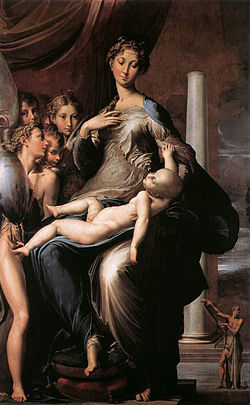
Artist Parmigianino
Year 1535-40
Type Oil on wood
Location Uffizi, Florence
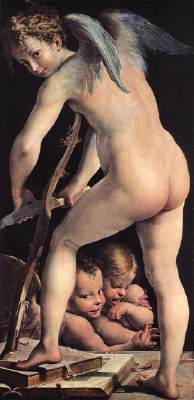
Cupid
1523-24
Oil on wood, 135 x 65,3 cm
Kunsthistorisches Museum, Vienna
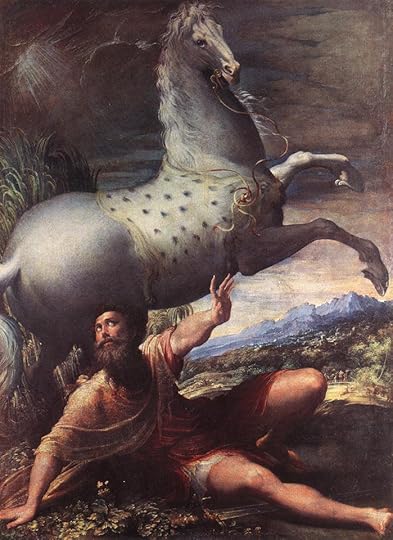
The Conversion of St. Paul
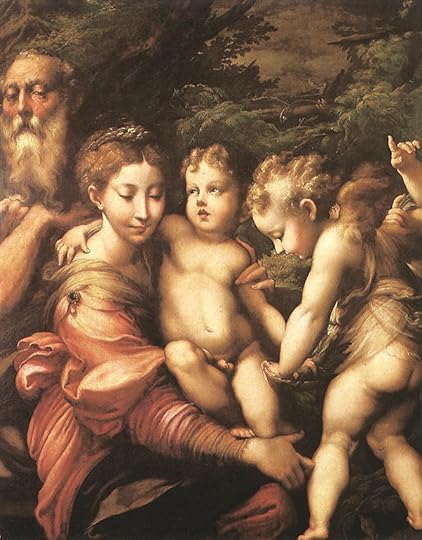
Rest on the Flight to Egypt
Monica is our expert on Parmigianino! Maybe she would like to add to our bit of trivia?
 Born on 12 January 1856: John Singer Sargent
Born on 12 January 1856: John Singer SargentUS painter specialized in portraits.
Moving in the circle of the Impressionists, he came to know most of them, and they reacted to his work in varying ways. Degas [19 Jul 1834 – 26 Sep 1917], as might have been expected, was brutally dismissive; Pissarro [20 Feb 1863 – 1944], in sending his son to see him in London, where Sargent spent the major part of his working life, described him as `an adroit performer'; but with Monet [14 Nov 1840 – 06 Dec 1926] he had a close and mutually profitable relationship. In the 1880s he began to paint landscapes that were overtly Impressionist in technique and approach, despite a certain superficiality. At this time he visited Monet at Giverny on several occasions, painting two memorable portraits of him: Claude Monet Painting at the Edge of a Wood in a Garden Near Giverny

Claude Monet Painting at the Edge of a Wood in a Garden Near Giverny
Sargent is known for his glamorous portraits of eminent or socially prominent people of the period. He was born in Florence, Italy, of US parents. He studied art in Italy, France, and Germany, receiving his formal art education at the Ecole des Beaux-Arts and in the Paris studio of the noted French portraitist Carolus-Duran. He spent most of his adult life in England, maintaining a studio there for more than 30 years and visiting the US only on short trips. Criticized for what some believed to be a superficial brilliance, Sargent's portraits fell into disfavor after his death. Since that time, however, these same canvases have been acknowledged for their naturalism and superb technical skill.
In 1879 Sargent went to Madrid to study the works of Diego Velazquez and to Haarlem to see the works of Frans Hals. Some critics believe that his best work, in a rich, dark palette, was done in the years immediately after this trip. At the Salon of 1884, Sargent exhibited what is probably his best-known work, Madame X, (the portrait of Madame Gautreau, a famous Parisian beauty).
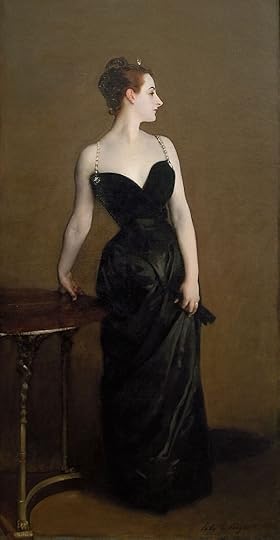
Madame X
Sargent considered it his masterpiece and was unpleasantly surprised when it caused a scandal — critics found it eccentric and erotic. Discouraged by his Parisian failure, Sargent moved permanently to London. His work was perhaps too continental and avant-garde to appeal immediately to English taste; The Misses Vickers (1884) was voted worst picture of the year by the Pall Mall Gazette in 1886.

The Misses Vickers
Then, however, in 1887, Carnation, Lily, Lily, Rose (1886), a study of two little girls lighting Japanese lanterns, captured the hearts of the British public, and he began to experience the phenomenal acclaim in England and the United States that would stay with him the rest of his life.
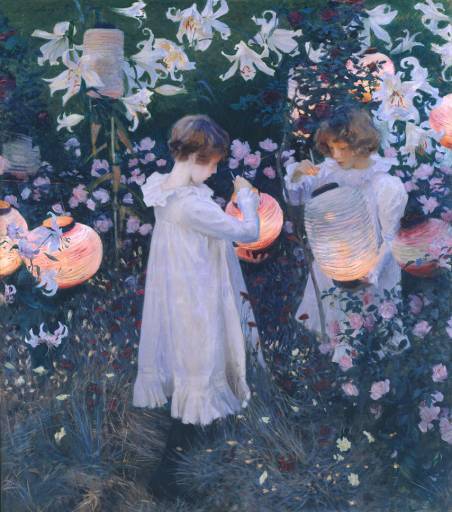
Carnation, Lily, Lily, Rose
Other Works:
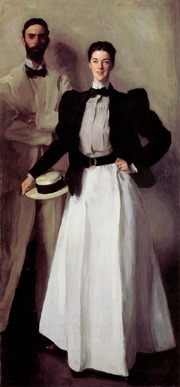
Mr. and Mrs. Isaac Newton Phelps Stokes
[image error]
Self Portrait
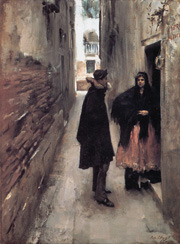
Street in Venice
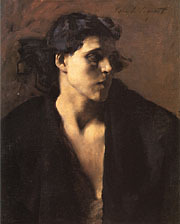
A Spanish Woman
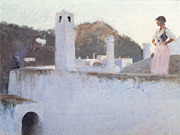
View of Capri
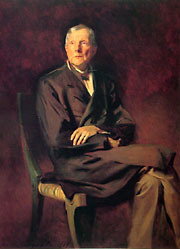
John D. Rockefeller
 Wow Heather, what beautiful posts! Thanks for taking the time to write all of that and post those amazing works of art! I can't resist commenting on JSS, he is one of my favorites. The European landscapes are so lovley and atmospheric. Gorgeous stuff. And Happy New Year to you!
Wow Heather, what beautiful posts! Thanks for taking the time to write all of that and post those amazing works of art! I can't resist commenting on JSS, he is one of my favorites. The European landscapes are so lovley and atmospheric. Gorgeous stuff. And Happy New Year to you!
 Happy belated birthday to Eva Hesse on January 11, 1936 In Hamburg, Germany.
Happy belated birthday to Eva Hesse on January 11, 1936 In Hamburg, Germany.[image error]
German-born U.S. sculptor known for her pioneering work in materials such as latex, fiberglass, and plastics.
[image error]
She arrived in New York City with her family in 1939, fleeing the Nazi regime. She attended the Pratt Institute, Cooper Union, and Yale University. In 1964 she married and moved briefly to Germany and began making sculpture, developing a style featuring sensuous shapes and unconventional materials (including rubber tubing, synthetic resins, cord, cloth, and wire). In the 1960s she exhibited throughout the U.S. and achieved critical acclaim; her work was sometimes associated with Minimalism. In 1969 she underwent the first of three unsuccessful operations for a brain tumor and died in 1970in NYC. Her influence since her death has been widespread.
[image error]
Repetition Nineteen, 1968, MoMA
[image error]
Contingent, 1969
[image error]
Josef Albers and Eva Hesse at Yale University
Eva Hesse had little praise for her Yale education and Albers seemed aware of this. Upon her death he sent a photograph of himself with Hesse to the Fischbach Gallery asking if her heirs might want to have a picture ‘showing her with me as her painting teacher ... despite (his emphasis) my being in it.’ Although she was among Albers’ favorite pupils, Hesse disliked him in so much as his views were not in keeping with her then expressionist painting technique and by extension, for what she perceived as the restrictiveness of his approach.
[image error]
Schema, 1967-68
[image error]
No Title, 1970, DesMoines Art Center

No title, c. 1962, oil on canvas
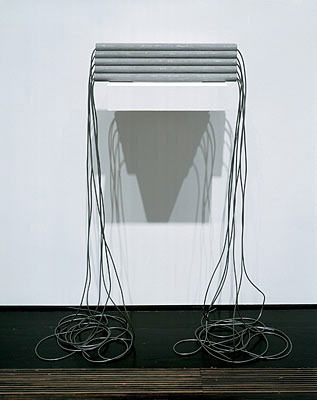
No title, 1967
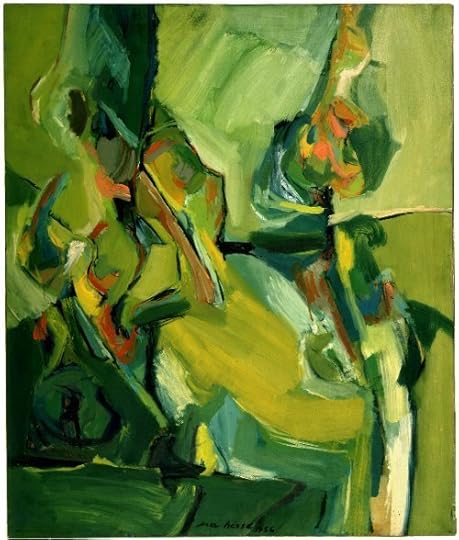
No title, 1956, oil on canvas

Accession II, 1967
[image error]
"Color is whatever comes out of the material and keeps it what it is."
-Artist Eva Hesse, Art Talk: Conversations with Twelve Women Artists
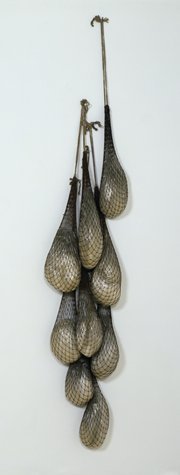
Unititled or Not Yet, 1966, cotton, plastic, paper, lead and string
[image error]
"I am interested in solving an unknown factor of art and an unknown factor of life."
 Heather wrote: "Happy 'late' Birthday to Girolamo Francesco Maria Mazzola “Parmigianino” !
Heather wrote: "Happy 'late' Birthday to Girolamo Francesco Maria Mazzola “Parmigianino” !“Le Parmesan”, not Mazzola Italian Mannerist painter, draftsman, and printmaker, born on 11 January 1503.
Beginning a ca..."
WOW, some expert I am! I don't even remember my boyfriends' birthdays! Thank you Heather! I don't understand "Le Parmesan, not Mazzola," though...
Francesco Mazzola was from Parma therefore nicknamed Parmigianino, "The little one from Parma." His last name, Mazzola, when pronounced correctly in Italian is, "MAT-zol-la".
Several of his paintings can be found in the Galleria Nazional, Parma. He was taught by his father and uncles and was inspired by, and worked with, Correggio. The most famous work was the ceiling cupola of St John the Evangelist, Parma. I tried to talk my way into the cardinals residence across the square to see what murals were being uncovered but couldn't get past a low level priest in the office.
IMO Parma has the best food in Italy.
Some of my favorite works by Parmigianino are:

Camerino di Diana e Atteone, Rocca San Vitale, Fontanellato, 1523
This room is a masterpiece. He was only 20 when he painted it.

Portrait of Antea, Museo di Capodimonte, Naples, c. 1531-4
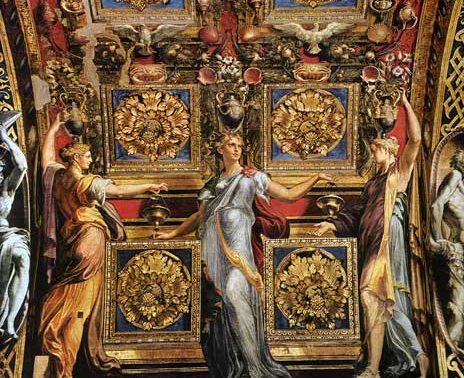
Mural of the Wise and Foolish Virgins, Madonna Della Steccata, Parma, 1535-9
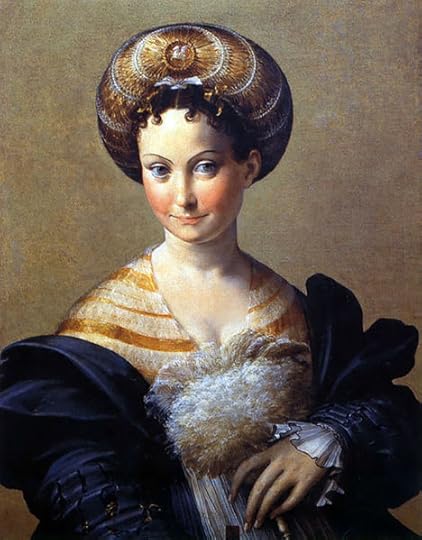
Turkish Slave, Galleria Nazionale, Parma, 1530-1.
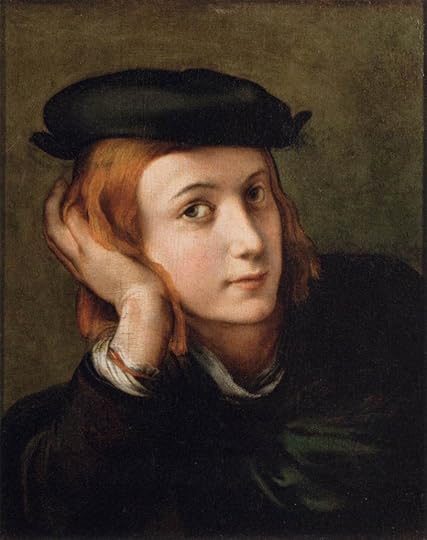
Portrait of Parmigianino, Correggio, Musee du Louvre, n.d.
This was long thought to be a painting by Parmigianino of a youth but now scholars believe it to be a portrait of Francesco as a young man painted by Correggio!
Thanks this morning for getting me off on a serious but very enjoyable tangent!
http://forum.politicainrete.net/esote...
 I like Sargent's work a lot too. But I think to say he is an Amerian is a little misleading. Didn't he live most, if not all his life in Europe?
I like Sargent's work a lot too. But I think to say he is an Amerian is a little misleading. Didn't he live most, if not all his life in Europe?Heather wrote: "Born on 12 January 1856: John Singer Sargent
US painter specialized in portraits.
Moving in the circle of the Impressionists, he came to know most of them, and they reacted to his work in varying ..."
 Thank you for your earlier compliment, Lorie, about JSS and Parmigianino! I have to say, though, that Carol is the one who posted the wonderful posts of Eva Hesse. She did do a good job!
Thank you for your earlier compliment, Lorie, about JSS and Parmigianino! I have to say, though, that Carol is the one who posted the wonderful posts of Eva Hesse. She did do a good job!
 Monica wrote: "I don't understand "Le Parmesan, not Mazzola," though...
Monica wrote: "I don't understand "Le Parmesan, not Mazzola," though...Maybe this will answer your question, Monica.
He did paint in oils, but there is no substance to the corny story that one of his descendants, after immigrating to the US and simplifying his last name by removing one z, founded the Corn Products Refining Company which, in his honor, introduced in June 1911 a new cooking and salad oil made from corn and named it Mazola. Actually this brand name was concocted from the words “maize” and “oil”. — As for Parmesan cheese, its only relationship to Parmigianino is that they both are from the Parma region, so that he must have been used to eating it.
 I mispronounced Mazzola enough times like the corn oil to be corrected by an Italian friend of mine. Yes, the parmesan cheese is the best you'll ever taste! It's part of the reason I thought the food was the best in Italy.
I mispronounced Mazzola enough times like the corn oil to be corrected by an Italian friend of mine. Yes, the parmesan cheese is the best you'll ever taste! It's part of the reason I thought the food was the best in Italy.I'm thrilled about the portrait at the Louvre.
 Happy birthday to Berthe Morisot on January 14, 1841 in Bourges, France.
Happy birthday to Berthe Morisot on January 14, 1841 in Bourges, France.[image error]
Edouard Manet, Berthe Morisot with a bouquet of violets, 1872
French painter and printmaker. Granddaughter of Jean-Honoré Fragonard, she studied with Camille Corot, but the major influence over her work was Édouard Manet, whose brother she later married. She exhibited regularly with the Impressionists. None of her exhibits proved commercially successful, but she outsold Claude Monet, Pierre-Auguste Renoir, and Alfred Sisley. Her colouring was delicate and subtle, often with a subdued emerald glow, and her subjects were often members of her family. She is best known for her extremely loose brushwork and for the sensitivity she brought to her female subjects. Morisot died on March 2, 1895 in Paris.
[image error]
The cradle, 1872, Musee d’Orsay
[image error]
Reading Woman, 1873, Cleveland Museum of Art
[image error]
Hanging the laundry out to dry, 1875, National Gallery of Art
[image error]
Julie daydreaming, 1894
[image error]
Marine, 1869
[image error]
Peasant hanging out the washing, 1881
[image error]
view of Paris from the Trocadero, 1872
[image error]
grain field, 1875
[image error]
In a park, 1874
[image error]
woman at her toilette, 1875
 Happy birthday to Henri Fantin-Latour on January 14, 1836 in Grenoble, France.
Happy birthday to Henri Fantin-Latour on January 14, 1836 in Grenoble, France.[image error]
Self-Portrait, pencil, charcoal, & whitening, 1860
French painter and printmaker. He was trained by his father, a portrait painter, and at the École des Beaux-Arts. Though he associated with progressive artists (Gustave Courbet, Eugène Delacroix, Édouard Manet), he was a traditionalist best known for his portraits and still lifes with flowers. His portrait groups, reminiscent of 17th-century Dutch guild portraits, depict literary and artistic persons of the time; his flower paintings were especially popular in England, thanks to James McNeill Whistler and John Everett Millais, who found patrons to support him. His later years were devoted to lithography. He died on August 25, 1904.
[image error]
Marie-Yolande de Fitz-James, 1867
[image error]
Édouard Manet, 1867
[image error]
Homage to Delacroix, 1864
[image error]
Portrait of Sonia, 1890
[image error]
Un atelier aux Batignolles, 1870
[image error]
Still Life: Glass, Silver Goblet and Cup of Champagne, 1860
[image error]
Still Life, 1866
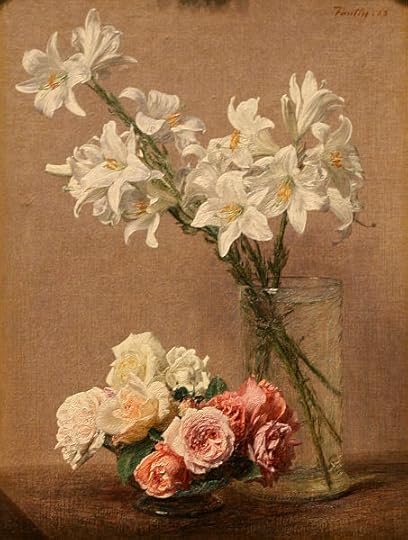
Roses and Lilies
 Happy birthday to Paul Cezanne on January 19, 1839 in Aix-en-Provence, France.
Happy birthday to Paul Cezanne on January 19, 1839 in Aix-en-Provence, France.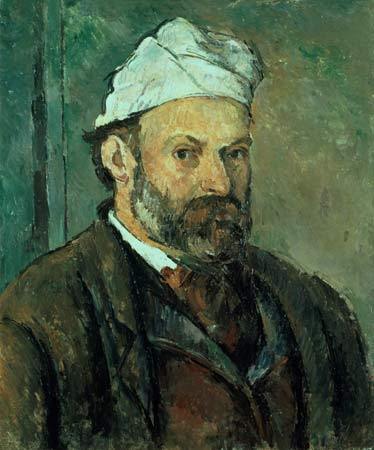
Cezanne was a French painter, one of the founders of modern painting. In 1859 he entered law school; in 1861 he left to study art in Paris. Critics denounced the works he exhibited at the Salon des Refusés (1863), but he persevered. He became associated with the Impressionists, exhibiting with them in 1874 and 1877. Unlike the other artists in the group, he emphasized the structure of objects rather than the vision presented by the light that emanated from them, basing his compositions on cubic masses, patches of color, and architectonic lines.
By the late 1870s he had broken with the Impressionists, exploring his own radically new way of simultaneously depicting deep space and flat design; his later work is therefore often classified as "Post-Impressionist." From 1890 to 1905 he produced masterpieces, one after another: variations of the Mont Sainte-Victoire landscape, three versions of Boy in a Red Waist-Coat, countless still-life images, and the Bathers series of nudes. Public reception to his first one-man exhibition (1895) was cool, but he slowly gained acceptance. His work was a major source of inspiration for early 20th century artists. He died on October 22, 1906 in Aix-en-Provence, France.
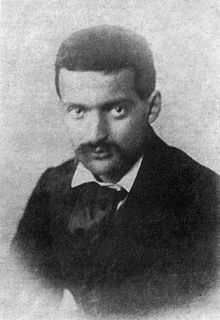
Cézanne can be said to form the bridge between late 19th century Impressionism and the early 20th century's new line of artistic enquiry, Cubism. The line attributed to both Matisse and Picasso that Cézanne "is the father of us all" cannot be easily dismissed.

Mont Sainte-Victoire landscape, The MET
Cézanne exhibited with the Impressionists in 1874, and although he shared their plein-air approach, he sought to reveal the inner geometry of nature. He aimed "to make of Impressionism something solid and durable, like the art of museums." The distinctive silhouette of Mont Sainte-Victoire rises above the Arc River valley near the town of Aix-en-Provence. Recent research has revealed the precise outlook recorded in this composition: Cézanne stood close to Montbriand, his sister's property, at the top of the hill just behind the house; the wall of the neighboring farmhouse is barely visible. In his later works, Mont Sainte-Victoire came to dominate the entire scene.
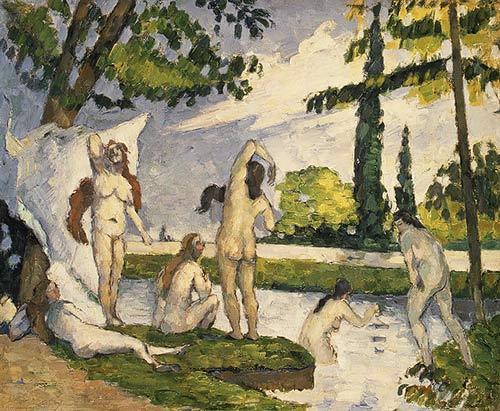
Bathers, 1874–75, The MET
Cézanne admired classical and Renaissance treatments of the nude and sought to continue that tradition. However, since he worked slowly and was uncomfortable with female models, he concentrated on imaginary scenes in sylvan settings. This work of 1874–75 is one of Cézanne's first paintings of bathers. The assertive parallel, diagonal brushstrokes, typical of the artist's work in the mid-1870s, were later refined and became a key component of his style. However, he soon abandoned the bright, high-keyed palette.
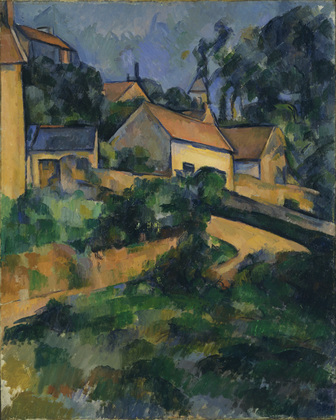
Turning Road at Montgeroult, 1898, MoMA
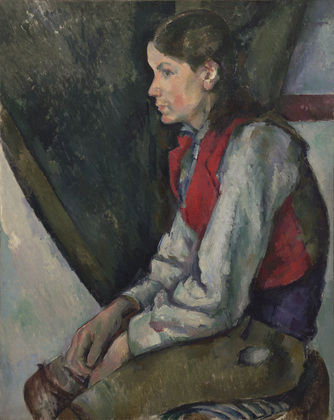
Boy in red vest, 1888-1890, MoMA
Though Cézanne rarely hired professional models, an Italian named Michelangelo di Rosa was the subject for this work—one in a series of four paintings and two watercolors he made of this boy in a red vest. Di Rosa is seen here in profile, casually hunched over with his hands on his lap. The short brushstrokes and triangular composition of the work provide a sense of volume and underscore the monumental stability of the figure. In one account, the painting's first owner, the artist Claude Monet, referred to Boy in a Red Vest as the best picture he owned, and it inspired him to declare of his contemporary, "Cézanne is the greatest of us all."
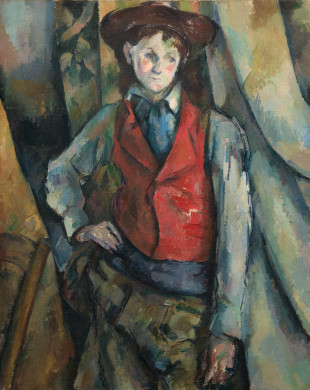
Boy in Red Waistcoat, National Gallery of Art
This is, at once, an astonishingly modern painting and one that reflects Cézanne's admiration for and connection to the past. He said himself that he "wanted to make of impressionism something solid and durable like the art of the museums." The boy's pose is that of an academic life study, and for some it has recalled the languid elegance of sixteenth-century portraiture. As a young man in Paris, Cézanne had learned not only from his impressionist colleagues but also by studying old masters in the Louvre.
On the other hand, it is possible to see this "portrait" as existing primarily as shapes and colors. Notice the paints used in the hands and face: these greens and mauves have little to do with human flesh. The almost dizzying background of angles and gentle arcs—it is hard at first to "read" them as draperies and a chair back—divide space rather than define it.

At the water’s edge, c. 1890, National Gallery of Art
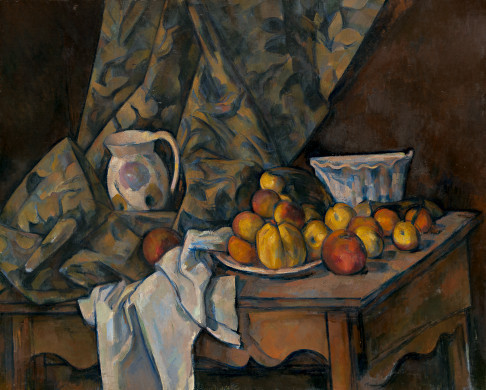
Still Life with Apples and Peaches, c. 1905, National Gallery of Art
"The eye must grasp, bring things together," Cézanne said, "The brain will give it shape." In a still life, where the artist also creates the world he paints, each object, each placement, each viewpoint represents a decision. Cézanne painted and repainted the objects pictured here many times. The table, patterned cloth, and flowered pitcher were all props he kept in his studio. Every different arrangement was a new exploration of forms and their relationships.
Here the table tilts unexpectedly, defying traditional rules of perspective. Similarly, we see the pitcher in profile but are also allowed a look down into it. Paradoxically, it is Cézanne’s fidelity to what he saw that accounts for this "denial" of logic and three-dimensional space. It is not so much that he is deliberately flattening space. Rather he is concentrating on the objects themselves instead of the perspectival scheme—the "box of air"—in which they exist. Cézanne worked slowly and deliberately. Over the course of days, he would move his easel, painting different objects—or even the same one—from different points of view. Each time, he painted what he saw. It was his absorption in the process of painting that pushed his work toward abstraction.

Still Life with Milk Jug and Fruit, c. 1900, National Gallery of Art
Impressionism not only encouraged Cézanne to adopt a brighter palette, but also gave him a way of expressing form. Rather than model three-dimensional shapes by gradually blending shades from dark to light, Cézanne, like the impressionists, gave them form by juxtaposing colors. “There is neither line nor modeling,” he said, “there is only contrast.”

Three Pears, 1878/1879, National Gallery of Art

The basket of apples, c. 1893, Art Institute of Chicago

The card players, Musee d’Orsay
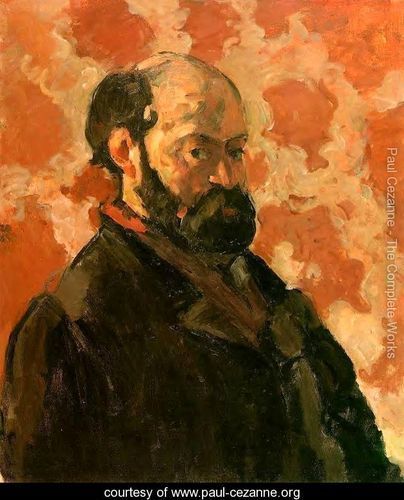
self portrait with rose background
http://www.paul-cezanne.org/the-compl...
 Those are really neat paintings, Carol. I set At the Water's Edge as my new desktop background. Thank you for recognizing this great artist, Cezanne.
Those are really neat paintings, Carol. I set At the Water's Edge as my new desktop background. Thank you for recognizing this great artist, Cezanne.
 When I was in Philadelphia in the 70s, I went to the Barnes Foundation a number of times and they had a number of Cezanne's works.
When I was in Philadelphia in the 70s, I went to the Barnes Foundation a number of times and they had a number of Cezanne's works.I remembered seeing THE CARD PLAYERS there and was confused by the above Card Players being listed at Musee D'Orsay. I googled the Barnes Foundation and there site says they have THE CARD PLAYERS on display there.
Any one know if there were more than ONE CARD PLAYERS?
As an aside, the Barnes site says they have 69 Cezannes - alos new place on the Parkway in downtown Philly is to open in 2012 but the current place is still open at least on the main floor for visiting.
 Great question -- Yes Jim, there is more than one painting of Card Players.
Great question -- Yes Jim, there is more than one painting of Card Players.Cézanne's paintings of card players was a series he worked on for several years, using local people as models. It seems that Cézanne did the 2 versions of his card-player paintings with multiple figures before he did the 3 paintings with only two figures.
Below is the one at Metropolitan Museum of Art and
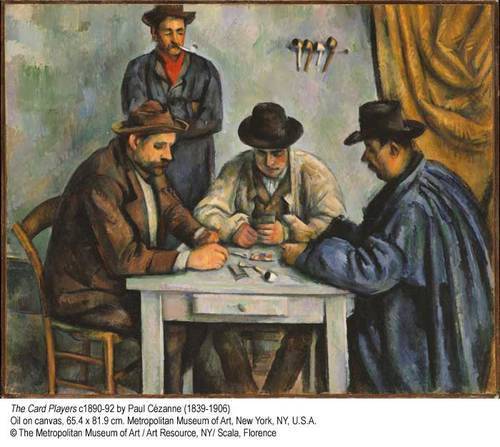
the one in the Barnes Foundation --

Also one in the Courtauld Gallery in London, and the Musée d’Orsay in Paris.
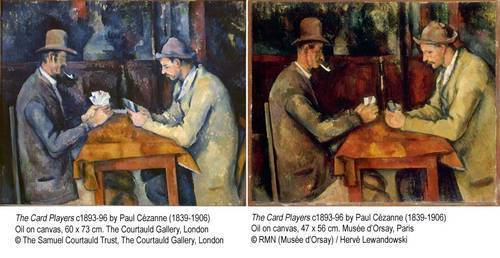
I posted the Musée d’Orsay painting because I prefer it's warm colors over the cool colors.
The fifth one is in a private collection.
 Thanks Carol
Thanks Carol As I recall the one at the Barnes foundation was huge.
Why do you think Cezanne did so many paintings of the same subject?
As an aside I just finished THE ART THIEF by Noah Charney. It's a fun and informative book about painting and art theft.
If any one has read it, what did you think of what was said about the paintings referenced in the book and the discussions on the act of painting itself?
Was what was said accurate?
 Born on 23 January 1832: Edouard Manet French Realist Impressionist painter and printmaker who died on 30 April 1883.
Born on 23 January 1832: Edouard Manet French Realist Impressionist painter and printmaker who died on 30 April 1883.[image error]
Henri Fantin-Latour's Portrait of Manet
Born into a prosperous middle-class family, Manet spent a year in the navy before entering the studio of Thomas Couture in 1850, where he stayed until 1856. Couture encouraged strong modeling through light and dark contrasts, and copies Manet made at the Louvre, after Velázquez, Titian, and Rubens among others, nurtured a painterly style of rich color and bold brushwork. Like the realist painters, Manet chose his subjects largely from modern life.
His Déjeûner sur l'herbe ( 1863) and Olympia (1863) created scandals both for their unconventional subject matter and their broad handling. In Olympia, the public was infuriated not only by the style, but also by the subject of the picture. 'A yellow-bellied courtesan ', 'a female gorilla made of india-rubber outlined in black ', 'the Queen of Spades after her bath ', 'a parcel of nude flesh or a bundle of laundry ', and other similar characteristics appeared in newspapers. When words were exhausted some 'enthusiasts ' tried to finish with the picture physically, and it was saved only thanks to being hung high, above the reach of the fanatics.
[image error]
Olympia
After traveling in Germany, Austria and Italy to study the Old Masters, Manet finally found the answer to all his questionings and aspirations for light and truth in the paintings of Velasquez and Goya at the Louvre. Influenced by these masters and by the example of Courbet, a French realist painter, he gradually evolved a new technique which presented modern aspects by modern methods.
His submissions to the Salon of 1863, The Picnic among them, were rejected and appeared at the Salon des Refuses. The large canvas became the focus of scandalized critical and public attention.

The Picnic
In 28 October 1863, Manet married Suzanne Leenhoff in Holland (See her portrait The Reading)
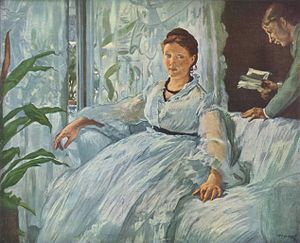
The Reading
Although Manet was frequently in the company of members of the Impressionist group, Berthe Morisot, his sister-in-law since December 1874, Degas, and Monet in particular, and they regarded him as a leader, he had no wish to join their group. He was naturally irritated by the critics ' tendency to confuse him with Monet. Manet 's stylistic discoveries, such as 'there are not lines in Nature ', which led to his abandoning of the conventional outline and his shaping the forms by means of color and subtle gradation of tints, decisively influenced the Impressionists, but their representation of light and optical reactions to color were different. Manet never painted what could be called a truly Impressionist picture.
[image error]
The Absinthe Drinker (1858)
a painting depicting a debauched and solitary man amongst the shadows of the back streets of Paris.
[image error]
Old Musician (1862)
portrays a darker aspect of Parisian life which was quite removed from Manet's circle, but nonetheless very real.

La Musique aux Tuileries (1862)
peopled with Manet's friends and family celebrates fashionable society. His loose handling of paint and lack of subject separated this painting from the highly finished canvasses approved of by the academy, and accepted by the Salon. In addition, the painting's ambience anticipates the "snapshot" quality taken up so well by Degas, and developed further by the Impressionists.
Political events between the years 1867-1871 were turbulent ones for Paris, and the Franco-Prussian war left Paris besieged and defeated.
In 1870, Manet sent his family south to protect them from the fighting in Paris and signed on as a gunner in the National Guard. There is much primary documentation in the form of letters to family and friends which expresses Manet's horror and dismay at the war and these paintings stand as testaments to Manet's sentiments. The Execution of Maximilian (1868) reaches out to Goya's Third of May but despite its masterly influence the painting was banned from being exhibited in Paris due to the "Frenchness" of the executioners costume.

Execution of Maximilian (1868)
By 1874 Manet's reputation as experimental artist and leader of the Impressionists was firmly established. The Café Guerbois, near Manet's studio became the gathering spot for Monet, Renoir, Sisley, Degas and Pissaro and although Manet presided over the regular meeting and debates held at the café, he was not enthusiastic about his role as leader of the avant-garde.
He never exhibited in any of the eight Impressionist exhibitions and yet by no means did Manet abandon the Impressionists. He worked closely with Monet in Argenteuil during 1874 and often gave financial support to his friends who needed it. It was during this time that Manet came closest to painting in the Impressionist style.
[image error]
The Monet Family in Their Garden at Argenteuil (1874)
Paintings such as The Monet Family in Their Garden at Argenteuil (1874), approach the notions of reflected light and atmosphere of Impressionism but Manet never becomes assimilated into the true Impressionist style.
Throughout his oeuvre Manet painted modern day life, yet many of his paintings are so much more than simple mimetic depictions. If Manet's work seems to be full of contradictions, or to employ a lack of perspective from time to time, then perhaps that was the true reality of Paris in Manet's time. Always controversial, Manet sought to record the days of his life using his own unique vision. From beggars, to prostitutes, to the bourgeoisie he sought to be true to himself and to reproduce “not great art, but sincere art.” He died in Paris.
 Great job -- thanks Heather!
Great job -- thanks Heather! [image error]
I remembered early this morning that today is Manet's bday. But I just got home from all the day's activities.
complete works:
http://www.manetedouard.org/
More of his artworks --

Boating, 1874, oil on canvas, The Metropolitan Museum of Art
[image error]
Young Man in the Costume of a Majo, 1863, oil on canvas, The Metropolitan Museum of Art
[image error]
Oysters, 1862, oil on canvas, National Gallery of Art
Oysters, one of Manet’s earliest still lifes, was reportedly painted for his fiancée and remained with them in the family home. The painting was in the artist's studio at the time of his death, however, so this may only be a romantic fiction.
[image error]
The Cradle - Camille with the Artist's Son Jean, 1867, oil on canvas, National Gallery of Art
[image error]
The Railway, 1872-1873, oil on canvas, National Gallery of Art
The Railway is one of Manet's most important paintings. It's dominated by two figures. The little girl, was reportedly the daughter of Manet's neighbor, Alphonse Hirsch. The other was Victorine Meurent, the woman who posed for Manet's most sensational pictures, Déjeuner sur l'herbe and Olympia. They are pictured in the garden behind Hirsch's apartment house.
[image error]
A Bar at the Folies-Bergere, 1882, Oil on canvas, Courtauld Institute of Art, London
Manet completed this painting (his last major work) in 1882 and hung it in the Salon that year.
[image error]
Portrait of Bethe Morisot with violet bouquet, 1872, oil on canvas, Musee d’Orsay

The Café Concert, 1878, oil on canvas, The Walters Museum of Art, Baltimore
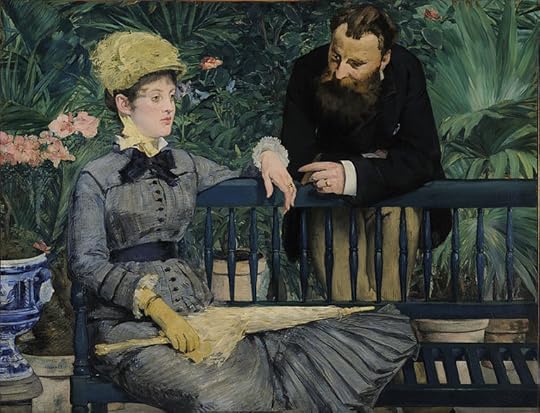
In the Conservatory, 1879, oil on canvas, National Gallery, Berlin
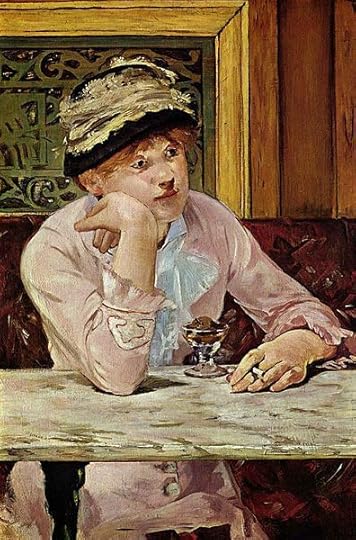
Plum, 1878, oil on canvas, National Gallery of Art
[image error]
Sur la plage, 1873, oil on canvas, Musee d’Orsay
This was in the exhibit "Impressionists by the Sea". One stop on the tour was at the Wadsworth Atheneum Museum of Art. On the name plate was stated that sand from the beach was found in the pigments in the painting.
book --
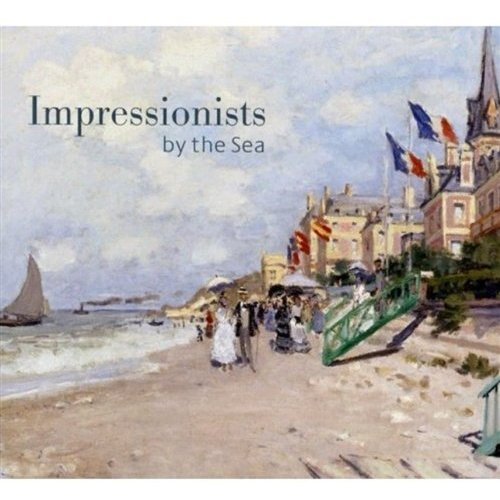
 Back in the 1970s, a feminist artist whose name escapes me, did a version of version of Dejuner sur l'herbe with the men nude and the women clothed.
Back in the 1970s, a feminist artist whose name escapes me, did a version of version of Dejuner sur l'herbe with the men nude and the women clothed.
 Born on 28 January 1912: Jackson Pollock “Jack the Dripper”, US Abstract Expressionist painter
Born on 28 January 1912: Jackson Pollock “Jack the Dripper”, US Abstract Expressionist painter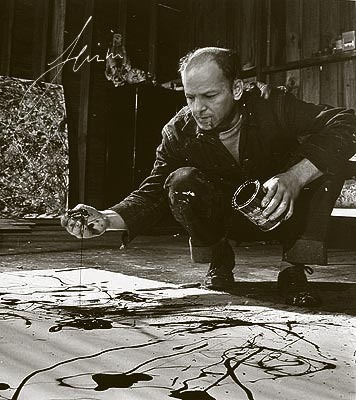
Pollock was the commanding figure of the Abstract Expressionist movement. He began to study painting in 1929 at the Art Students League, New York, under the Regionalist painter Thomas Hart Benton. Of his time with Benton, Pollock later told the New Yorker that his teacher "drove his kind of realism at me so hard I bounced right into non-objective painting."
By the mid 1940s he was painting in a completely abstract manner, and the drip and splash style for which he is best known emerged with some abruptness in 1947. Instead of using the traditional easel he affixed his canvas to the floor or the wall and poured and dripped his paint from a can; instead of using brushes he manipulated it with sticks, trowels or knives (to use his own words), sometimes obtaining a heavy impasto by an admixture of sand, broken glass or other foreign matter'.
This manner of Action painting had in common with Surrealist theories of automatism that it was supposed by artists and critics alike to result in a direct expression or revelation of the unconscious moods of the artist.
Pollock's name is also associated with the introduction of the All-over style of painting which avoids any points of emphasis or identifiable parts within the whole canvas and therefore abandons the traditional idea of composition in terms of relations among parts.
During the 1950s Pollock continued to produce figurative or quasi-figurative black and white works and delicately modulated paintings in rich impasto as well as the paintings in the new all-over style.
In 1956 Time magazine called him ‘Jack the Dripper’.
It has been suggested that Pollock was influenced by Native American sand paintings, made by trickling thin lines of colored sand onto a horizontal surface. It was not until 1947 that Pollock began his “action” paintings, influenced by Surrealist ideas of “psychic automatism” (direct expression of the unconscious).
Prone to heavy drinking and possessing a volatile personality, the artist developed a reputation (especially among European artists) as a "cowboy," the kind of rugged individualist found only in the American West.
Pollock entered Jungian analysis for treatment of his alcoholism and in 1938 was briefly institutionalized at Bloomingdale Asylum in White Plains, New York. Pollock's early work borrowed imagery from Picasso, the muralists, and Jungian symbolism.
Through the development of extraordinary control in his hands and wrists, Pollock was able to manipulate seemingly endless and intricate webs of curls and splatters. The artist often began with recognizable shapes and figures that he slowly obscured through the application of many layers of abstract patterns.
Abstract art was often met with hostility, as Michigan Congressman George Dondero declared modern art to be Communist and an affront to American values. Nonetheless, Pollock's reputation benefited equally from derision as well as from praise. Earlier in his career, Pollock claimed not to know where his work came from. However, as he developed the drip painting process some referred to as "action painting," he found himself defending his skill against attacks from critics who claimed that the paintings appeared to be randomly constructed. Pollock always claimed that he was drawing on his unconscious for inspiration, but this admission did not presuppose that he lacked control over the application of the paint. It was nearly impossible for critics to ignore the physicality of Pollock's methods, but the artist saw these techniques as nothing more than the means through which he arrived at a particular aesthetic statement.
On the evening of August 11, 1956, Pollock and Edith Metzger were killed while driving an Oldsmobile he'd acquired by trading in two paintings. Kligman survived the accident.
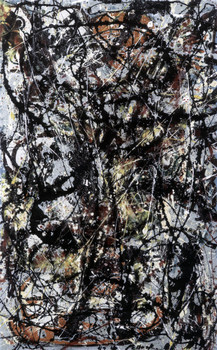
Shooting Star 1947

Guardians of the Secret 1943
 Happy belated January 28th birthdays to . . .
Happy belated January 28th birthdays to . . . . . . ALICE NEEL (1/28/1900 – 10/13/1984)
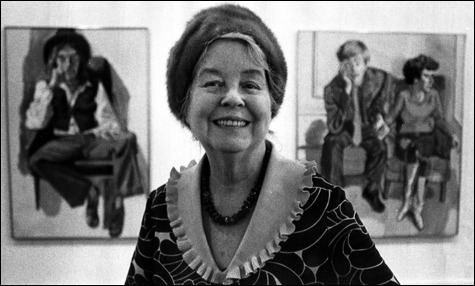
Alice Neel was born at the beginning of a century that would send Americans in search of an identity, in the wake of events ranging from the Great Depression to the Cold War. Neel grew up plagued by this sense of uncertainty, facing the conflict between what she called the "terror" of her observations and the instinctive need to record them in painting. The search for self began when she was a hypersensitive child and culminated in becoming her own artistic subject, lightly disguised in the faces of those she painted. Most famous for startling portrayals of the people who populated her life, Alice Neel insisted on calling these works "pictures of people" in order to distinguish herself from the male-dominated tradition of portraiture. Neel refused to accept the social mores of her time, which called for women to focus most of their time on raising families. Her conscious break with the past allowed her also to disregard a conventional split in art -- a distinction between the purpose of art by men and women -- and to forge an identity unburdened by anyone's expectations.
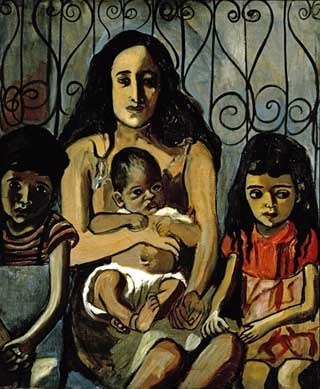
The Spanish Family, 1943, oil on canvas, private collection
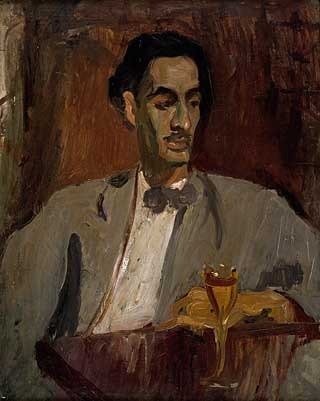
Carlos Enriquez, 1926, oil on canvas, private collection

Andy Warhol, 1970, oil on canvas, Whitney Museum of American Art
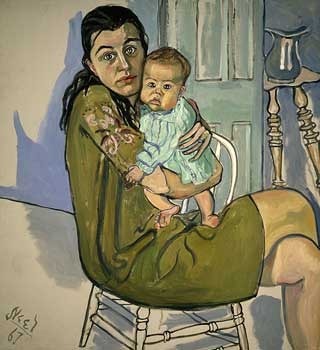
Nancy and Olivia, 1967, oil on canvas, Private Collection
http://www.aliceneel.com/
. . . RICHMOND "JIMMIE" BARTHE (1901 – 1989)
[image error]
A pioneer in American sculpture in the 1930s and 1940s in that he was one of the first African American artists to focus thematically on the lives of blacks, both in the United States and in Africa. He depicted African Americans at work in the fields of the South, African Americans of distinction, and African Americans as victims of racial violence. He also sculpted images of African warriors and ceremonial participants.

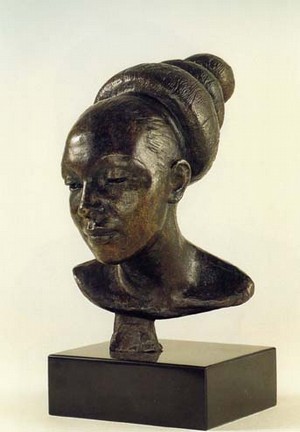
Josephine Baker

The Boxer, 1942, bronzw
. . . CLAES OLDENBURG (born 1/28/1929)
Swedish sculptor, best known for his public art installations typically featuring very large replicas of everyday objects, some are soft sculpture objects.
[image error]
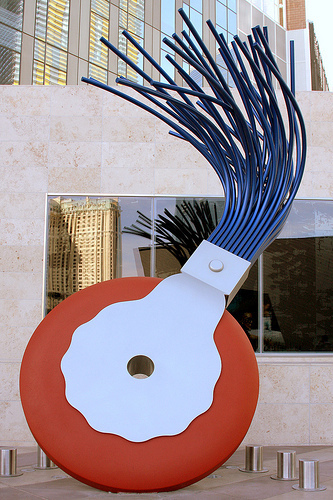
eraser, City Center – Las Vegas (between the Mandarin Oriental and Aria Hotels)

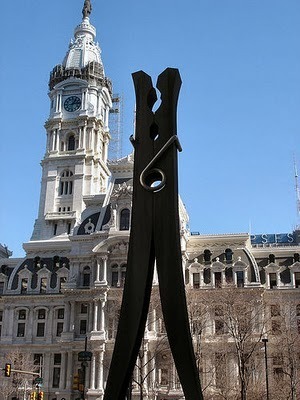
Clothespin, 1976, Philadelphia
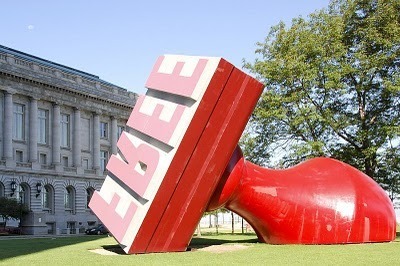
FREE at Cleveland City Hall
 Thanks, Carol! I especially like Richmond Barthe. I haven't heard of him before but I like 'The Boxer' in addition to his other sculptures. Of course, sculpture is my medium of choice!
Thanks, Carol! I especially like Richmond Barthe. I haven't heard of him before but I like 'The Boxer' in addition to his other sculptures. Of course, sculpture is my medium of choice!
 Happy birthday to Thomas Cole on February 1, 1801 in Bolton-le-Moor, England.
Happy birthday to Thomas Cole on February 1, 1801 in Bolton-le-Moor, England.[image error]
Thomas Cole was America's leading landscape painter during the first half of the 19th century. Before emigrating with his family to the US in 1818, he served as an engraver's assistant and as an apprentice to a designer of calico prints. Cole worked briefly as an engraver in Philadelphia before joining his family in Steubenville, Ohio, in 1819. While in Ohio he apparently learned the rudiments of oil painting from an itinerant portrait painter named Stein. In 1823, during a stay in Pittsburgh, Cole began drawing from nature, creating closely observed and intensely expressive images of trees and branches. Later that year he returned to Philadelphia, where he studied at the Pennsylvania Academy of the Fine Arts and worked in a variety of art-related jobs.
[image error]
A View of the Two Lakes and Mountain House, Catskill Mountains, Morning, 1844, oil on canvas, Brooklyn Museum
In April 1825 Cole moved to New York, where his family had also relocated. That summer he made an extensive sketching tour up the Hudson River and into the Catskill Mountains. In late October 1825 three of his landscapes were sold to three prominent figures in the young nation's art community, John Trumbull (1756-1843), William Dunlap (1766-1839), and Asher B. Durand (1796-1886). In January 1826 Cole was elected a founding member of the National Academy of Design, and his works were increasingly in demand with leading patrons such as Daniel Wadsworth (1771-1848) of Hartford and Robert Gilmor, Jr. (1774-1848) of Baltimore.
Although Cole had ample commissions in the late 1820s to paint pictures of American scenery, his ambition was to create a "higher style of landscape" that could express moral or religious meanings. His first major efforts in this vein met with mixed reviews, and he decided study and travel in Europe were necessary. In June 1829 Cole sailed for England, where he studied the works of Old Masters and also met Joseph Mallord William Turner (1775-1851) and John Constable (1776-1837). He subsequently traveled in France and in Italy, with lengthy stays in Rome and Florence. While in Italy he conceived of a multi-part landscape series tracing Although he failed to interest Gilmor in commissioning the series, upon his return to America in 1832 Cole did manage to convince the retired New York merchant Luman Reed (1785-1836) to support his grand project. The result, the five canvas Course of Empire (New-York Historical Society), was completed in 1836 and received considerable popular attention and generally favorable reviews.
[image error]
Course of the Empire-Desolation
Cole continued to paint American landscapes in the 1830s and early 1840s, but much of his energy in these years went into the creation of complex imaginary works such as Departure and Return (1837, Corcoran Gallery of Art, Washington, D.C.) and the two versions of The Voyage of Life (1839-1840, Munson-Williams-Proctor Institute, Utica, and 1842, National Gallery of Art, Washington, D.C.). In 1836 he married Maria Barstow and settled in Catskill, New York, a small village on the west side of the Hudson and close to the Catskill Mountains. That same year Cole, who was throughout his career a prolific writer of prose and poetry, published his "Essay on American Scenery" in the American Monthly Magazine, in which he expressed many of his most deeply felt convictions about landscape painting.
American Scenery -- https://www.csun.edu/~ta3584/Cole.htm
In 1841 Cole make a second trip abroad, with extensive travel in Italy, including a memorable visit to Sicily that resulted in several views of Mt. Etna. He returned to Catskill in 1842; in 1844 he accepted the young Frederic Edwin Church as a pupil on Daniel Wadsworth's recommendation. In the mid and late 1840s Cole painted many impressive American landscapes, which are notable for an increased accuracy in the depiction of atmosphere and light. At the same time he labored, ultimately without success, to complete a five-part series called The Cross and the World, in which he endeavored to portray the individual's quest for spiritual knowledge and salvation.

Genesis – the subsiding waters of the Deluge, 1829

The cross at sunset, 1848
Cole's premature death in Catskill on February 11, 1848, was universally mourned and a comprehensive memorial exhibition of his works was quickly organized in New York. His influence on the course of American landscape painting was profound and his works influenced numerous younger painters who matured in the late 1840s and early 1850s, most notably Jasper F. Cropsey and Church.
The Last of the Mohicans, Cora Kneeling at the Feet of Tamenund, 1827, oil on canvas, The Wadsworth Atheneum Museum of Art

Cole’s painting The Last of the Mohicans was inspired by a passage from James Fenimore Cooper’s popular novel of the same title, which became an instant best seller after its publication in early 1826. Cole combined the real and the ideal in this work – a faithful rendering of White Mountain, New Hampshire, scenery in the background with idealized geological features which enhance the minute narrative scene in the foreground. Casting herself in front of Tamenund, Chief of the Delaware, Cora pleads for mercy for her sister and herself as warrior Magua looks on. Behind Magua, rocking stone rests precariously atop a high pinnacle, and, to its right, a large cave appears behind the group of figures, evoking the sexual tension in Cooper’s novel. The Atheneum’s founder, Daniel Wadsworth, who was Cole’s most important early patron, acquired this painting shortly after its completion for his growing art collection, that featured the works of Cole.
THE VOYAGE OF LIFE series --
Cole's renowned four-part series traces the journey of an archetypal hero along the "River of Life." Confidently assuming control of his destiny and oblivious to the dangers that await him, the voyager boldly strives to reach an aerial castle, emblematic of the daydreams of "Youth" and its aspirations for glory and fame. As the traveler approaches his goal, the ever-more-turbulent stream deviates from its course and relentlessly carries him toward the next picture in the series, where nature's fury, evil demons, and self-doubt will threaten his very existence. Only prayer, Cole suggests, can save the voyager from a dark and tragic fate.
From the innocence of childhood, to the flush of youthful overconfidence, through the trials and tribulations of middle age, to the hero's triumphant salvation, The Voyage of Life seems intrinsically linked to the Christian doctrine of death and resurrection. Cole's intrepid voyager also may be read as a personification of America, itself at an adolescent stage of development. The artist may have been issuing a dire warning to those caught up in the feverish quest for Manifest Destiny: that unbridled westward expansion and industrialization would have tragic consequences for both man and nature.
The Voyage of Life:

Childhood, 1842, oil on canvas, National Gallery of Art
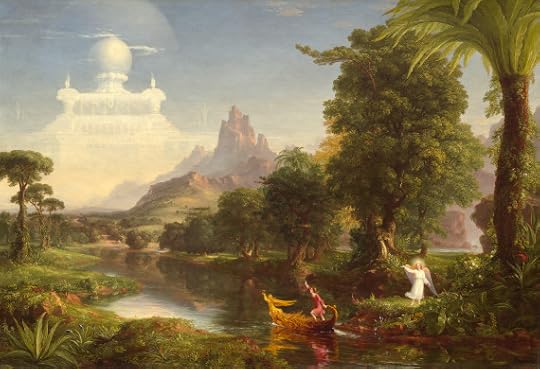
Youth, 1842, oil on canvas, National Gallery of Art

Manhood, 1842, oil on canvas, National Gallery of Art

Old Age, 1842, oil on canvas, National Gallery of Art
complete works -- http://www.thomas-cole.info/
Cedar Grove - National Historic site -- http://www.thomascole.org/
 Norman Percevel Rockwell Born: February 3, 1894
Norman Percevel Rockwell Born: February 3, 1894New York, New York
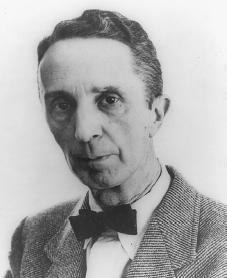
Rockwell enjoyed drawing at an early age and soon decided he wanted to be an artist. During his freshman year in high school, he also attended the Chase School on Saturdays to study art. Later that year he attended Chase twice a week. Halfway through his sophomore year, he quit high school and went full time to art school.
In his first class with a live model (a person modeling without clothing), the model was lying on her side and because all Rockwell could see were her feet and buttocks—that was all he drew. Rockwell noted that, as Donald Walton wrote in his book A Rockwell Portrait, "he started his career in figure drawing from the bottom up."
In March 1916 Rockwell traveled to Philadelphia, Pennsylvania, to see George Horace Lorimer, editor of the Saturday Evening Post. It was Rockwell's dream to do a Post cover. Since he did not have an appointment, he showed his work to the art editor, who then showed it to Lorimer. The editor accepted Rockwell's two finished paintings for covers as well as three sketches for future covers. Rockwell's success with the Post made him more attractive to other magazines, and he began selling paintings and drawings to Life, Judge, and Leslie's. Also in 1916 he married Irene O'Connor, a schoolteacher.
In 1917, shortly after the United States entered World War I (1914–18; a war fought between German-led Central Powers and the Allies: England, the United States, Italy, and other nations), Rockwell joined the navy and was assigned to the camp newspaper. Meanwhile, he continued painting for the Post and other publications. After the war Rockwell started doing advertising illustration, working for Jell-O, Willys cars, and Orange Crush soft drinks, among others. In 1920 he was hired to paint a picture for the Boy Scout calendar. (He would continue to provide a picture for the popular calendar for over fifty years.) During the 1920s Rockwell's income soared. In 1929 he was divorced from his wife Irene, and in 1930 he married Mary Barstow, with whom he had three sons. In 1939 the family moved to a sixty-acre farm in Arlington, Vermont. In 1941 the Milwaukee Art Institute gave Rockwell his first one-man show in a major museum.
After President Franklin Roosevelt (1882–1945) made a speech to Congress in 1941 describing the "four essential human freedoms," Rockwell created paintings of the four freedoms: Freedom of Speech, Freedom of Worship, Freedom from Want, and Freedom from Fear. He completed the paintings in six months in 1942, and they were published in the Post in 1943. The pictures became greatly popular, and many other publications asked the Post for permission to reprint them. The federal government also took the original paintings on a national tour to sell war bonds. As Ben Hibbs, editor of the Post, noted in Rockwell's autobiography, "They were viewed by 1,222,000 people in 16 leading cities and were instrumental in selling $132,992,539 worth of bonds."
In 1943 Rockwell's studio burned to the ground. He lost some original paintings and drawings as well as his large collection of costumes. He and his family then settled in nearby West Arlington, Vermont. Rockwell worked on special stamps for the Postal Service as well as posters for the Treasury Department, the military, and Hollywood movies. He also did illustrations for Sears mail-order catalogs, Hallmark greeting cards, and books such as The Adventures of Tom Sawyer and The Adventures of Huckleberry Finn. In 1953 Rockwell and his family moved to Stockbridge, Massachusetts. In the summer of 1959, his wife Mary suffered a heart attack and died. In 1961 he married Molly Punderson, a retired schoolteacher.
Also in 1961 Rockwell received an honorary (obtained without meeting the usual requirements) Doctor of Fine Arts degree from the University of Massachusetts as well as the Interfaith Award of the National Conference of Christians and Jews for his Post cover painting of the Golden Rule. Rockwell's last Post cover (he did three hundred seventeen in all) appeared in December 1963. The magazine's circulation was shrinking at that time, and new management decided to switch to a new format. Rockwell continued painting news pictures for Look and contributing to McCall's.
People's choice
In 1969 Rockwell had a one-man show in New York City. Critics were usually unkind toward Rockwell's work or ignored it completely, but the public loved his paintings, and many were purchased for prices averaging around $20,000. Thomas Buechner wrote in Life, "It is difficult for the art world to take the people's choice very seriously." In 1975, at the age of eighty-one, Rockwell completed his fifty-sixth Boy Scout calendar. In 1976 the city of Stockbridge celebrated a Norman Rockwell Day. On November 8, 1978, Rockwell died in his home.
In 1993 a new Rockwell museum was opened near Stockbridge. Museum director Laurie Norton Moffatt listed all of Rockwell's works in a two-volume book; according to Landrum Bolling of the Saturday Evening Post, the total exceeded four thousand original works. In November 1999 an exhibit of Rockwell's work entitled "Norman Rockwell: Pictures for the American People" opened at the High Museum of Art in Atlanta, Georgia.
http://www.notablebiographies.com/Pu-...
Some of his work:
Boy Scouts
[image error]
Growth of a Leader
[image error]
The Right Way
Ads
[image error]
[image error]
Other
[image error]
[image error]
http://www.rockwellsite.com/default.asp
For more Information
Buechner, Thomas S. Norman Rockwell, Artist and Illustrator. New York: H. N. Abrams, 1970.
Claridge, Laura P. Norman Rockwell: A Life. New York: Random House, 2001.
Moline, Mary. Norman Rockwell Encyclopedia: A Chronological Catalog of the Artist's Work 1910–1978. Indianapolis: Curtis, 1979.
Rockwell, Norman. Norman Rockwell, My Adventures as an Illustrator: An Autobiography. Indianapolis: Curtis, 1979. Reprint, New York: Abrams, 1988.
Walton, Donald. A Rockwell Portrait. Kansas City, KS: Sheed Andrews and McMeel, Inc., 1978.
 We took our granddaughter, a visual arts student at The Governor's School for the Arts & Humanities, to see the Norman Rockwell exhibit from the collections of George Lucas and Steven Spielberg at the Smithsonain American Art Museum on July 2, 2010, opening day. I don't know what I expected, but I was pleasantly surprised. Her favorite was "Boy Reading Adventure Story" that was actually the cover for The Saturday Evening Post Nov. 10, 1923.
We took our granddaughter, a visual arts student at The Governor's School for the Arts & Humanities, to see the Norman Rockwell exhibit from the collections of George Lucas and Steven Spielberg at the Smithsonain American Art Museum on July 2, 2010, opening day. I don't know what I expected, but I was pleasantly surprised. Her favorite was "Boy Reading Adventure Story" that was actually the cover for The Saturday Evening Post Nov. 10, 1923.
 Happy Belated Birthday FRANZ MARC February 8, 1880
Happy Belated Birthday FRANZ MARC February 8, 1880Biography
b. 1880, Munich; d. 1916, Verdun, France
Franz Marc was born on February 8, 1880, in Munich. The son of a landscape painter, he decided to become an artist after a year of military service interrupted his plans to study philology. From 1900 to 1902 he studied at the Kunstakademie in Munich with Gabriel Hackl and Wilhelm von Diez. The following year, during a visit to France, he was introduced to Japanese woodcuts and the work of the Impressionists in Paris.
Marc suffered from severe depression from 1904 to 1907. In 1907 he went again to Paris, where he responded enthusiastically to the work of Paul Gauguin, Vincent van Gogh, the Cubists, and the Expressionists; later, he was impressed by the Henri Matisse exhibition in Munich in 1910. During this period he received steady income from the animal-anatomy lessons he gave to artists.
In 1910 Marc’s first solo show was held at Kunsthandlung Brackl, Munich; and he met August Macke and the collector Bernhard Koehler. He publicly defended the Neue Künstlervereinigung München (NKVM) and was formally welcomed into the group early in 1911, when he met Vasily Kandinsky. After internal dissension split the NKVM, he and Kandinsky formed Der Blaue Reiter, whose first exhibition took place in December 1911 at Heinrich Thannhauser’s Moderne Galerie, Munich. Marc invited members of the Berlin Brücke group to participate in the second Der Blaue Reiter (The Blue Rider) show two months later at the Galerie Hans Goltz, Munich. Der Blaue Reiter Almanac was published with lead articles by Marc in May 1912. When World War I broke out in August 1914 Marc immediately enlisted. He was deeply troubled by Macke’s death in action shortly thereafter; during the war, he produced his Sketchbook from the Field. Marc died on March 4, 1916, near Verdun-sur-Meuse, France.
http://www.guggenheimcollection.org/s...
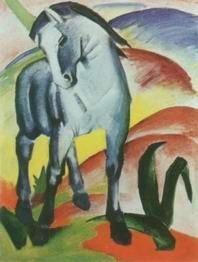
Blue Horse
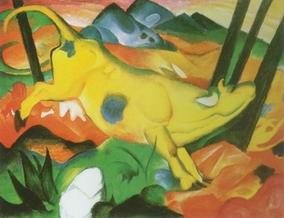
Cow
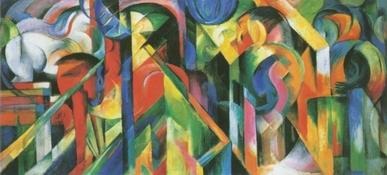
Ecu Lawn
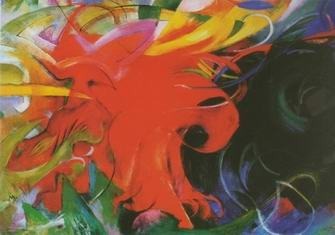
Kampfende Formen

Little Yellow Horses
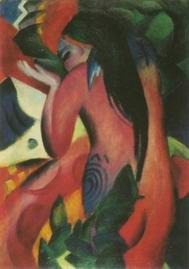
Red Woman
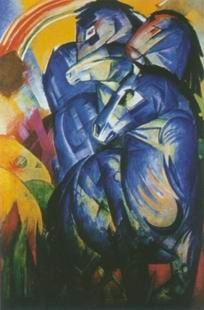
The Tower of the Blue Horses
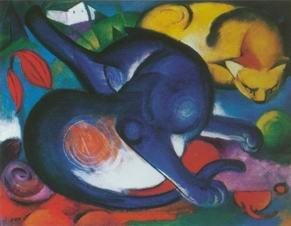
zwei Katzen , blau und gelb
 Happy belated birthday to Grant DeVolson Wood on February 13, 1891 in Anamosa, Iowa.
Happy belated birthday to Grant DeVolson Wood on February 13, 1891 in Anamosa, Iowa.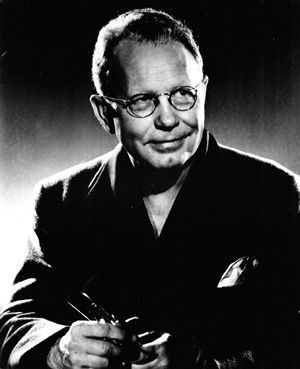
Wood was trained as a craftsman and designer as well as a painter. On a visit to Germany in 1928, he was strongly influenced by the sharp detail of 15th-century German and Flemish paintings, and he soon abandoned his Impressionist manner for the detailed, realistic manner for which he is known. His American Gothic caused a sensation when exhibited in 1930.
[image error]
American Gothic, 1930, oil on Beaver Board, The Art Institute of Chicago
It was first exhibited in 1930 at the Art Institute of Chicago, where it is still located. It was given a $300 prize and made news stories country-wide, bringing Wood immediate recognition. Since then, it has been borrowed and satirised endlessly for advertisements and cartoons.
Art critics who had favorable opinions about the painting, such as Gertrude Stein and Christopher Morley, assumed the painting was meant to be a satire of repression and narrow-mindedness of rural small-town life. It was seen as part of the trend toward an increasingly critical depictions of rural America, along the lines of Sherwood Anderson's 1919 Winesburg, Ohio, Sinclair Lewis' 1920 Main Street, and Carl Van Vechten's The Tattooed Countess in literature.
Wood rejected this reading of it. With the onset of the Great Depression, it came to be seen as a depiction of steadfast American pioneer spirit. Another reading is that it is an ambiguous fusion of reverence and parody.
Wood's inspiration came from Eldon, southern Iowa, where a cottage designed in the Gothic Revival style with an upper window in the shape of a medieval pointed arch, provided the background and also the painting's title. Wood decided to paint the house along with "the kind of people I fancied should live in that house." The painting shows a farmer standing beside his spinster daughter, figures modeled by the artist's dentist and sister, Nan (1900–1990). The dentist, Dr. Byron McKeeby (1867–1950) was from Cedar Rapids, Iowa. The woman is dressed in a colonial print apron mimicking 19th century Americana and the couple are in the traditional roles of men and women, the man's pitchfork symbolizing hard labor.
The compositional severity and detailed technique derive from Northern Renaissance paintings, which Grant had looked at during three visits to Europe; after this he became increasingly aware of the Midwest's own legacy, which also informs the work. It is a key image of Regionalism.
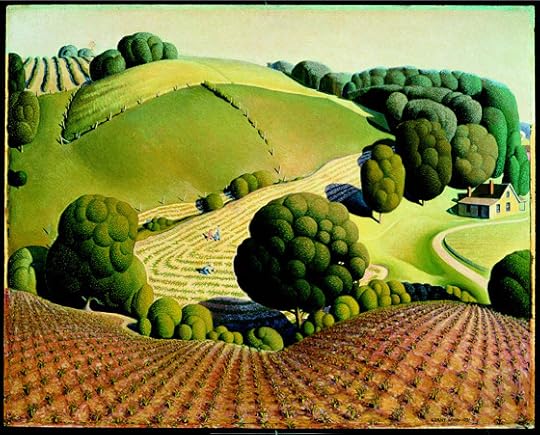
Young Corn, 1931, Cedar Rapids Museum of Art

Stone City Iowa
[image error]
Death on the Ridge Road, 1935, oil on masonite, Williams College Museum of Art

From 1924 to 1935 Wood lived in the loft of a carriage house that he turned into his personal studio at "5 Turner Alley" (the studio had no address until Wood made one up himself). In 1932, Wood helped found the Stone City Art Colony near his hometown to help artists get through the Great Depression. He became a great proponent of regionalism in the arts, lecturing throughout the country on the topic.
Wood taught painting at the University of Iowa's School of Art from 1934. During that time, he supervised mural painting projects, mentored students, produced a variety of his own works, and became a key part of the University's cultural community. On February 12, 1942, one day before his 51st birthday, Wood died at the university hospital of liver cancer.
 Between 1920 and 1928 Grant Wood made several trips to Europe studying the works of the Impressionists, Post-Impressionists as well as the Northern Renaissance masters. Studying briefly at the Julian Academy, Wood particularly admired the realism of Van Eyck, Albrecht Durer and Hans Holbein.
Between 1920 and 1928 Grant Wood made several trips to Europe studying the works of the Impressionists, Post-Impressionists as well as the Northern Renaissance masters. Studying briefly at the Julian Academy, Wood particularly admired the realism of Van Eyck, Albrecht Durer and Hans Holbein.Albrecht Durer --
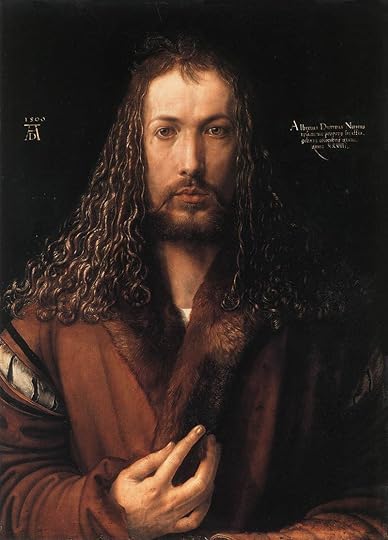
Van Eyck --

Hans Holbein The Younger --
[image error]
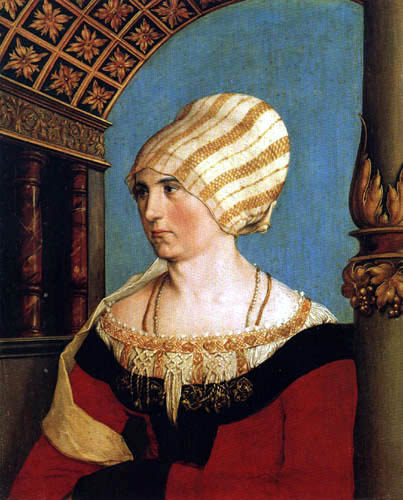
 Happy birthday to Andre Breton!
Happy birthday to Andre Breton![image error]
Breton was a French writer, critic, and editor. In 1919, he helped found the Dadaist review Littérature. Influenced by psychiatry and the Symbolist movement, he wrote poetry using the automatic-writing technique. In 1924, his Manifeste du surréalisme—Surrealist Manifesto—provided a definition of Surrealism as "pure psychic automatism." In the 1930s he joined and then broke with the Communist Party; in 1938 he founded the Fédération de l'Art Revolutionnaire Indépendant with Leon Trotsky in Mexico. He spent World War II in the U.S. and returned to France in 1946. His Poèmes appeared in 1948. He also wrote essays, works of criticism, and novels, including Nadja (1928).

surrealist landscape, 1950
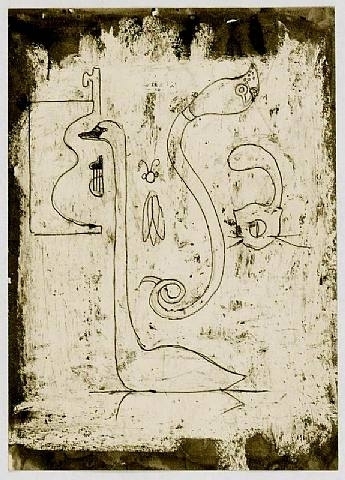
The Dance, ink and wax on paper


Portrait Andre Breton, c. 1930, photograph by Man Ray
 Happy belated birthdays to . . .
Happy belated birthdays to . . . . . . Charles-François Daubigny on February 15, 1817.
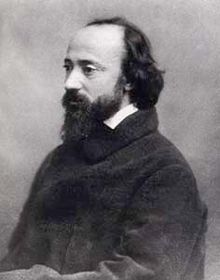
The first of the great plein aire painters and a key figure associated with the Barbizon School, Daubigny was highly influential in connecting the work of the landscape masters of his own generation with the Impressionists and their contemporaries who followed them. Daubigny worked directly from nature in order to capture the ever-changing light that illuminated his favorite subjects of rivers, beaches and canals.

This beautifully rich and sumptuous impressionist landscape depicting a wonderful sunset was probably painted alla prima from his floating studio boat on the River Oise. It is signed and dated lower left: 'Daubigny 1865'. From 1852 onward he came under the influence of Gustave Courbet. In 1866, Daubigny visited England, eventually returning because of the Franco-Prussian war in 1870. In London he met Claude Monet, and together they left for the Netherlands. Back in Auvers, he met Paul Cézanne, another important impressionist. It is assumed that these younger painters were influenced by Daubigny. He died on February 19, 1878.
. . . Raphaelle Peale born on February 17, 1774 in Annapolis, Maryland.
[image error]
The fifth child, though eldest surviving, of Charles Willson Peale and his first wife. As with all the Peale children, Raphael was trained by his father as an artist. Early in his career, the pair collaborated on portraits. On some commissions, Raphael painted miniatures while his brother, Rembrandt, painted full size portraits. In 1792, he made a trip to South America in order to collect specimens for the Peale's Museum. In 1797, with his brother Rembrandt, he traveled to Charleston, S.C., where they attempted to establish another museum. The plan fell through, and Raphael returned to painting miniatures. He married and fathered eight children. In 1803 for two years, Raphael toured Virginia with the ‘physiognotrace,' a profile making machine, with which he was briefly successful. In August 1808, he was hospitalized with delirium tremens, exacerbated by severe gout. By 1813, he was unable to walk without crutches. After the downturn in his health, in an era when most artists considered still life a subject worthy only of amateurs, he devoted himself almost exclusively to still life painting. It is for these works he is best known. Raphael Peale is today considered the founder of the American still life school. After reportedly indulging in a night of heavy drinking, his health destroyed, Raphael died at age 51 at his home in Philadelphia.

Still Life of strawberries, nuts and citrus

Venus Rising from the Sea - A Deception (After the Bath)
A painting which famously comments on the fact that depictions of nude women, however artistic, were barely acceptable for public display in the United States of the early 19th century.
. . . Chinese-American contemporary artist Hung Liu born on February 17, 1948 in Changchun, China.
[image error]
Visage III, oil on canvas, 2004, 72 x 72 in.
Hung Liu was born in the People's Republic, China and emigrated to the United States in 1984. She attended Beijing Teachers College in 1975 and studied mural painting as a graduate student at the Central Academy of Fine Arts in Beijing. She is a class of '86 alumna of UC, San Diego. Her paintings and prints often make use of anonymous Chinese historical photographs, particularly those of women, children, refugees, and soldiers as subject matter. Liu's paintings - often large, drippy, and washed with layers of linseed oil - can be seen as critiques of the rigid academicism of the Chinese Socialist Realist style in which she was trained, as well as metaphors for the loss of historical memory. One of the first Chinese artists to study in the U.S., Liu's works represent the ongoing tension between emigration and immigration. Liu has received numerous awards, including two painting fellowships from the National Endowment for the Arts, and her work is represented in the permanent collections of major museums and private collections throughout the United States and Asia. She is currently the Professor of Painting at Mills College in Oakland, California.
[image error]
Relic 12, oil on canvas and lacquered wood, 66 x 66 inches, 2005, New Britain Museum of American Art
[image error]
Relic 9, oil on canvas, 66 x 66 inches, 2004
 . . . Louis Comfort Tiffany was born on February 18, 1848 in New York City, NY.
. . . Louis Comfort Tiffany was born on February 18, 1848 in New York City, NY. 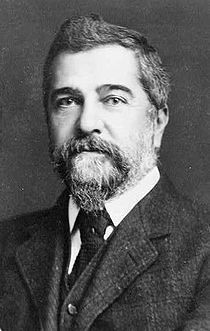
U.S. painter, craftsman, philanthropist, decorator, and designer. The son of the famous jeweler Charles Louis Tiffany (1812 – 1902), he studied painting with American painter George Inness and in Paris; he was a recognized painter before he began to experiment with stained glass in 1875. He founded a glassmaking factory in Queens, N.Y., in 1878. There he developed an iridescent glass he called Favrile (old French word for handmade which he trademarked), which achieved widespread popularity in Europe. After 1900 Tiffany's firm ventured into lamps, jewelry, pottery, and bibelots. He is internationally recognized as one of the greatest forces of the Art Nouveau style.
[image error]
Favrile glass specimens from 1896-1902.
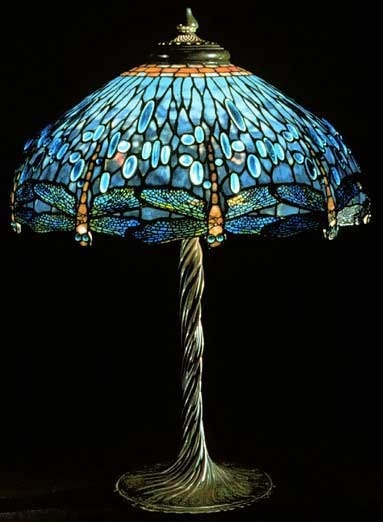
[image error]
Pictured above is the central panel of "Education" (1890), a thirty-foot-wide stained glass window by Louis Comfort Tiffany and Tiffany Studios. Located in Linsley-Chittenden Hall at Yale University, it depicts Science (personified by Devotion, Labor, Truth, Research and Intuition) and Religion (personified by Purity, Faith, Hope, Reverence and Inspiration) in harmony, presided over by the central personification of "Light, Love, Life .” Tiffanhy died on January 17, 1933.
[image error]

. . . French sculptor Constantin Brancusi born on February 21, 1876 in Hobita, Romania.

He became adept at carving wooden farm implements as a child and later studied in Bucharest and Munich and at the École des Beaux-Arts in Paris, having walked most of the way from Munich. He first exhibited in Paris in 1906. In 1908 he executed Sleeping Muse, influenced by Auguste Rodin, and The Kiss, his first truly original work. He developed a geometric style that became his hallmark, reducing natural forms to an abstract simplicity. He exhibited five works, including Mademoiselle Pogany, in the 1913 Armory Show. One of his favorite themes was a bird in flight; his most famous treatment was the celebrated polished-bronze Bird in Space (1919). Through numerous exhibitions in the U.S. and Europe, he achieved great fame and success, and he is regarded as a pioneer of modern abstract sculpture.

the kiss
[image error]
sleeping muse
. . . Visionary photographer Ansel Adams born on February 20, 1902 in San Franciso, CA.
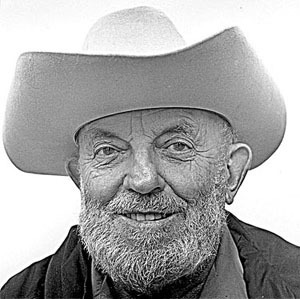
Ansel Adams's stark, detailed photographs of Yosemite National Park are among the most recognizable images in the world. Adams was a piano player who turned his attention to photography in the 1920s, inspired by the wilderness of central California. By the end of the 1920s he was earning a living from his photography, thanks largely to his association with the Sierra Club. In the 1930s and '40s his reputation grew and he spent a good deal of time in New York, advancing his career as an artist while working as a commercial photographer to pay the bills. He wrote many technical works and encouraged museums and colleges to add photography departments, but didn't achieve financial success for his art until late in life, when his images of Yosemite and the American southwest became icons of both 20th-century photography and environmental awareness. Like guitarist Les Paul, Adams was known both as a technical innovator and a lifelong workhorse; he kept taking photos up until his death in 1984 at age 82.
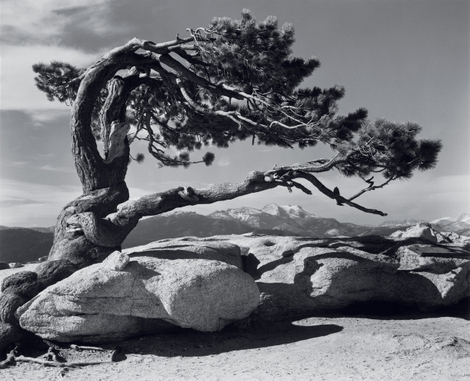
Jeffrey Pine, 1940

Thunderstorm Espanola Valley, 1961
 . . . Rembrandt Peale born on February 22, 1778 in Bucks County, Pennsylvania.
. . . Rembrandt Peale born on February 22, 1778 in Bucks County, Pennsylvania.[image error]
He studied with his father at the Royal Academy in London. In Paris 1808 – 10 he was offered the post of court painter to Napoleon I. His early portrait of Thomas Jefferson (1805) was his masterpiece. Following his father's example, he opened a museum and portrait gallery in Baltimore, where he established the first illuminating gasworks. When he resumed painting, he turned to formal subject pieces (e.g., The Court of Death, 1820) before returning to portraiture, continuing a series of portraits of George Washington.
[image error]
. . . African American painter Horace Pippin born on February 22, 1888 in West Chester, Pennsylvania.
[image error]
Pippin served in the infantry in World War I, but he was wounded in 1918 and discharged with a partially paralyzed right arm. His first large canvas was an eloquent protest against war, End of the War: Starting Home (1931 – 34). His primary theme became the African American experience, as seen in his series entitled Cabin in the Cotton (mid 1930s) and his paintings of episodes in the lives of the antislavery leader John Brown and Pres. Abraham Lincoln. After the art world discovered Pippin in 1937, he received wide acclaim as the greatest black painter of his time.
[image error]
Domino Players, 1943
[image error]
Abe Lincoln, The Great Emancipator, 1942
. . . American painter, sculptor and printmaker Tom Wesselmann born on February 23, 1931 in Cinncinnati, Ohio.
[image error]
Wesselmann planned to become a cartoonist until his final year at the Cooper Union in New York, where he studied from 1956 to 1959 and was encouraged to become a painter. The powerful work of Willem de Kooning provided both inspiration and inhibition as he attempted to find a new direction centered around a tangible subject. Choosing the figure he began to make small collages of torn paper and found materials, as in the Little Great American Nudes of 1961-2; these culminated in large, aggressive compositions such as Great American Nude #3. These and giant still-lifes composed of common household objects and collage elements culled from popular advertising images, such as Still Life #20, brought him fame and notoriety as a founder of American POP ART. In the late 1960s an increasingly dominant eroticism emerged in works such as Bedroom Painting #13, with its more literal but still intense colors and tight, formal composition. The pictorial elements, exaggerated in their arabesque forms and arbitrary coloring, became significantly larger in scale in his works of the 1970s, such as a series of Smoker mouths; enormous, partially free-standing still-lifes moved into sculptural space, and finally became discrete sculptures of sheet metal. In the 1980s he returned to works for the wall with cut-out steel or aluminium drawings, which replicate his familiar, graceful line in enamel on cut-out metal. He was also an innovative printmaker, adapting his imagery to lithographs, screenprints, aquatints and multiples in relief. An important retrospective of his work was held in Japan in 1993-4.
[image error]
Still Life #20, mixed media, collage, 1962, Albright-Knox Art Gallery Buffalo, New York
[image error]
great American nude #57, 1964
 . . . French painter and designer Charles LeBrun born on February 24, 1619 in Paris France.
. . . French painter and designer Charles LeBrun born on February 24, 1619 in Paris France.[image error]
self portrait

Pieta
After study in Paris and Rome, he received large decorative and religious commissions that made his reputation. Possessing extraordinary organizational as well as technical skills, as the first painter to Louis XIV he created or supervised the production of most of the paintings, sculptures, and decorative objects commissioned by the French government for three decades, notably for the Palace of Versailles. As director of the Academy of Painting and Sculpture and organizer of the French Academy at Rome, he was instrumental in establishing the characteristic homogeneity of French art in the 17th century.
. . . American painter Winslow Homer born on February 24, 1836 in Boston, MA.
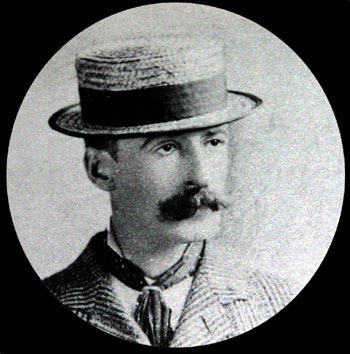
He served an apprenticeship with a Boston lithographer, then became a freelance illustrator in New York City. He exhibited at the National Academy of Design in 1860 and was elected a member in 1865. During a stay in France in 1866, he was attracted to French naturalism and Japanese prints, but they had little effect on his generally bright and happy work. He became a master of watercolor and his ability as an oil painter matured; he focused increasingly on solitary, withdrawn figures. He spent 1881 – 82 in the English village of Tynemouth, on the North Sea, where the coastal atmosphere, the sea, and the stoic people are the subjects of some of his most powerful images. In 1883 he moved permanently to Prouts Neck, and his dominant theme became the sea and the endless struggle against an uncaring nature. In his later years he continued to paint vigorously and in near-total isolation. Though he was recognized in his lifetime as a leading U.S. painter, appreciation of his enormous achievement came only after his death.

Snap the Whip, oil on canvas, 1872
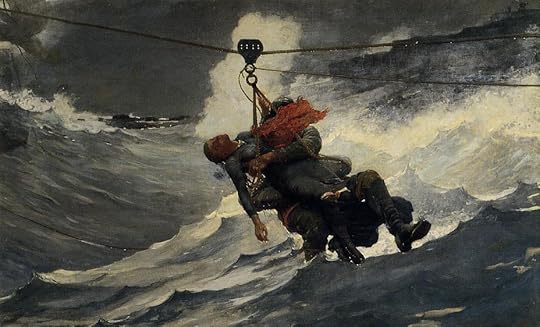
The Life line
One of the most remarkable of his oil paintings. The heroism that he had intuited in the Cullercoats people was reinvented in his new home. In his determination to capture the weight and threat of the ocean, Homer turned back from watercolor to oil paint. The physical density of the paint proved necessary to fully capture the tremendous breakers on the rocky coast. The Life Line is dramatic but stops just short of being melodramatic. He designed a superb central group of the seaman holding an unconscious woman while both are supported by the canvas sling (called a "breeches buoy") drawn by a block and tackle across a rope to the shore. The artist's genius is in the editing of the scene even more than in the figures. He gives us only a hint of the ship on the left side and the shore on the other. Essentially, the two figures are suspended in great peril between walls of water, their rescue cable disappearing out of both sides of the painting. The bold cropping is crucial to the sense of being poised between salvation and disaster. The palette is mostly somber gray-greens and white spume—look at how that white spume rises behind the figures, marks their place in the picture. But the strong red slash in the center, one strong note of color, is the woman's shawl, which has blown over the rescuer's face, and it's equally important for its color and for the resultant anonymity of the man, of the rescuer. It heightens another, almost subliminal, aspect of the figures, a powerful erotic undertow, as it were. Eroticism and danger, eroticism and salvation or loss, are often commingled in art and in literature. The story of Paolo and Francesca as told by Dante and recast by Rodin comes to mind. The man and woman in The Life Line could almost be entwined lovers in another context. At the National Academy of Design exhibition in the spring of 1884, this painting was acclaimed as a masterpiece, and it is the anchor of Homer's return to oil painting in the mid-1880s.
. . . French painter Pierre-August Renoir born on February,25, 1841 in Limoges, France.
[image error]
His father, a tailor in Limoges, moved with his large family to Paris in 1844. Renoir began working as a decorator of porcelain at 13 and studied painting at night. He formed a close friendship with his fellow student Claude Monet and became a leading member of the Paris Impressionists. His early works were typically Impressionist snapshots of real life, full of sparkling color and light. By using small, multicolored strokes, Renoir evoked the vibration of the atmosphere, the sparkling effect of foliage, and especially the luminosity of a young woman's skin in the outdoors. Because of his fascination with the human figure, he was distinctive among the others, who were more interested in landscape. Among his early masterpieces are Le Moulin de la Galette (1876) and The Luncheon of the Boating Party (1881). A visit to Italy (1881 – 82) introduced him to Raphael and the expressive force of clear line and smooth painting, and by the mid 1880s he had broken with Impressionism to employ a more disciplined, formal technique. In works such as Bathers (1884 – 87), he emphasized volume, form, contours, and line. In his later works, he departed from the strict rules of Classicism to paint colorful still lifes, portraits, nudes, and landscapes of southern France, where he settled in 1907. Rheumatism confined him to a wheelchair by 1912 but he never ceased to paint, even though often with his brush attached to his hand. He died on Dec. 3, 1919. The filmmaker Jean Renoir was his son.
[image error]
Le Moulin de la Galette (1876)
[image error]
The Luncheon of the Boating Party (1881)
[image error]
Dancing at Bougival, 1883, oil on canvas, Boston mfa
 . . . and French painter, sculptor, printmaker and caricaturist Honoré Victorin Daumier born on February 26, 1808 in Marseille, France.
. . . and French painter, sculptor, printmaker and caricaturist Honoré Victorin Daumier born on February 26, 1808 in Marseille, France.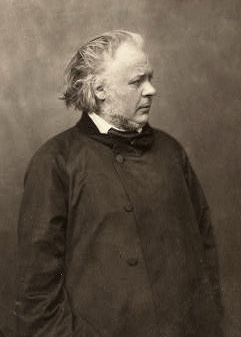
When Honoré was 6, the family moved to Paris, where the elder Daumier hoped to win success as a poet (but did not). Honoré grew up in a home in which humanistic concerns had some importance. A born draftsman and designer, largely self-taught, he received some formal instruction from one of Jacques Louis David's students. Daumier also learned how the elements of the new, inexpensive, and popular technique of lithography. Daumier's style is so much his own that it is not easy to disentangle influences from other artists.
Under the sponsorship of Philipon, publisher of Caricature and Charivari, Daumier drew political cartoons in the early 1830s until press censorship in 1835 forced him to do satiric pictures of bourgeois manners. Among his best-known early lithographs are Lafayette Buried, portraying the fat king as a hypocritical mourner, although the dark black shape of Louis Philippe is esthetically attractive; the Legislative Belly, depicting a group of potbellied legislators and organized in a broad light and shade pattern; and Rue Transnonain, concerned with police brutality and showing a family murdered in a bedroom, which is dramatically effective in its restraint.

In order to give a forceful character to his images of legislators, Daumier modeled busts of his targets in clay before executing his drawings. He was on friendly terms with several sculptors and periodically returned to the use of sculptured forms; some of them were later carried out in terra-cotta or cast in bronze.
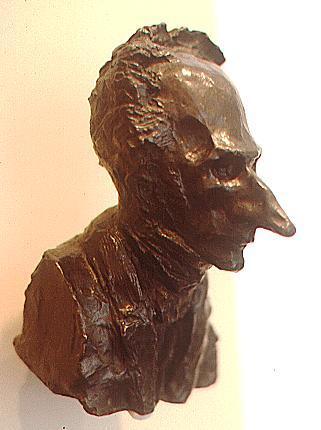
Bust of Legislator, 1830, Hirschorn Museum
Between 1836 and 1838 Daumier did a notable series of 100 lithographs about an imaginary swindler named Robert Macaire, who symbolized the get-rich-quick philosophy of the times. His character is tellingly suggested in a famous print entitled The Public Is Stupid.
[image error]
Macaire addresses Daumier who is sitting at his desk drawing: "Monsieur Daumier, your Robert Macaire series is delightful! It's an exact picture of the thievery of our times…the faithful portrait of innumerable crooked characters who turn up everywhere — in business, in politics, in the bureaucracy, in finance, everywhere! The rascals must bear you quite a grudge…." In this lithograph, as in the other, Daumier both implicates himself in the 'Macarism' of selling newspapers, but this time positions himself firmly outside of the rascally establishment. As Baudelaire, in Some French Caricaturists, noted:
Macaire was the clear starting point of the caricature of manners…The political pamphlet gave way to comedy…And so caricature took on a new character, and was no longer particularly political. It became the general satire of the citizenry. It impinged on the domain of the novel.
In the early 1830s Daumier published a series of 50 devastatingly anticlassical lithographs entitled Ancient History. Delightfully comic in effect, they also effectively exploit the rich blacks possible in the lithographic technique. The Abduction of Helen of Troy (below) is a good example: Paris, gleefully smoking a cigar, is riding in triumph on the shoulders of Helen; Narcissus, admiring his reflection, is hideously scrawny.
[image error]
The Revolution of 1848 gave Daumier another opportunity to do political cartoons, among them The Last Meeting of the Council and Victor Hugo and émile Girardin (as supporters of Louis Napoleon). In 1850, as Louis Napoleon seemed to be an increasing threat to the republic, Daumier fashioned a sculptured caricature, Ratapoil ("Ratskin"), which symbolized the whole class of Bonapartist followers and Napoleon himself. It is a strikingly novel pictorial conception of sculpture and seems almost to have been "painted" with some fluid material. http://www.nga.gov/collection/sculptu...
A decade later The Laundress (ca. 1863; two versions) reflects Daumier's deep interest in ordinary people and, in subject at least, belongs to the mid-century development of realism.
[image error]
[image error]
In the early 1860s, when Daumier had no regular employment, he did many small canvases, watercolors, and drawings. His persistent interest in the arts comes out delightfully in The Connoisseur.
[image error]
The Connoisseur, 1860-65, pen and ink, watercolor, lithographic crayon and gouache over black chalk on woven paper, The Metropolitan Museum of Art
Although Daumier, like Gustave Courbet, maintained that it was necessary to be of one's own time, he sometimes turned to literary sources, as in the long series of interpretations of Don Quixote, painted at the end of his career. Don Quixote and Sancho Panza, with its balancing of two eternal human types, reflects the balance in his own temperament of opposed romantic and realistic impulses.

During his own time Daumier was not widely recognized as a painter, and his only one-man show of paintings was held in 1878. He died the following year on February 11 in Valmondois.
 Happy birthday to Oskar Kokoschka born on March 1, 1886, Pöchlarn, Austria.
Happy birthday to Oskar Kokoschka born on March 1, 1886, Pöchlarn, Austria.[image error]
Austrian poet and painter. He studied and taught at the Vienna School of Arts and Crafts but was dissatisfied because the school omitted study of the human figure, his primary artistic interest.
[image error]
His early paintings were rendered in delicate, agitated lines and relatively naturalistic colors. After c. 1912 he became a leading exponent of Expressionism; his portraits came to be painted with increasingly broader strokes of more varied color and heavier outlines. While recovering from a wound received in World War I, he wrote, produced, and staged three plays; his Orpheus and Eurydice (1918) became an opera by Ernst Krenek (1926). The landscapes he produced during 10 years of teaching and travel mark the second peak of his career. Shortly before World War II he fled to London, where his paintings became increasingly political and antifascist. He continued his political art after moving to Switzerland in 1953. He died Feb. 22, 1980, in Villeneuve, Switzerland.
[image error]
Self portrait as a warrior, 1909
[image error]
in the garden, 1934
[image error]
[image error]
 Happy birthday to Itō Jakuchū born in 1716 in Kyoto, Japan.
Happy birthday to Itō Jakuchū born in 1716 in Kyoto, Japan.Itō Jakuchū was an Eccentric Japanese painter of the mid-Edo period. Though many of his paintings concern traditionally Japanese subjects, particularly chickens and other birds, his painting style and methods were heavily influenced by Western painting. Many of his otherwise traditional works display a great degree of experimentation with perspective, and with other very modern stylistic elements. Though compared to Soga Shōhaku and other exemplars of the mid-Edo period eccentric painters, Jakuchū is said to have been very calm, restrained, and professional. He held strong ties to Zen Buddhist ideals, and was considered a lay brother (koji); but he was also keenly aware of his role within a Kyoto society that was becoming increasingly commercial.
Most of Jakuchū's works were in the form of hanging scrolls, painted in a combination of Western and traditional Japanese methods and styles. A very common theme among his work is birds, in particular chickens and roosters, though several of his more famous paintings depict cockatoos, parrots, and phoenixes. Jakuchū also experimented with a number of forms of printing, most of them using woodblocks. But occasionally he would use stencils or other methods to produce different effects. He died in Kyoto in 1800.
[image error]
white plum blossoms in moonlight, silk, ink and color, Edo period


Chrysanthemums by a stream with rocks

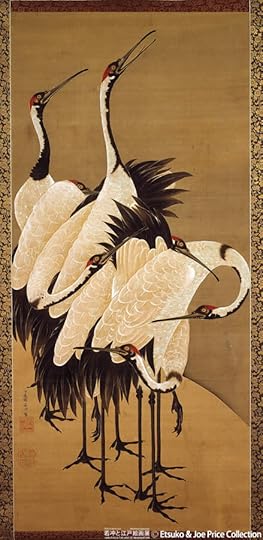

http://chaari.wordpress.com/2009/01/0...
 Carol wrote: "Happy belated birthdays to . . .
Carol wrote: "Happy belated birthdays to . . . Itō Jakuchū is new to me, thanks for the heads up about him. My friend and I will be in Tokyo and Kyoto ... I have so much to read... As I was telling Heather, I'm so lazy, well, doing lots of yard work, but not reading except for these wonderful posts.
Carol, do you use a mac? Apart from your amazing posts, I'm impressed you know how to type all the accents for Japanese, German umlauts, French accent egus... When you've got your skype going, may I have a tutorial?
:-)



